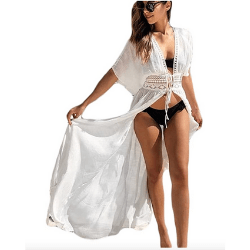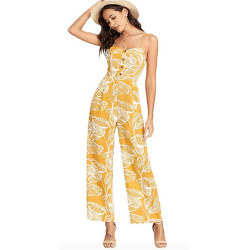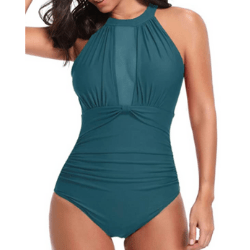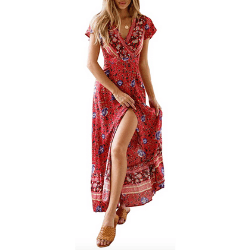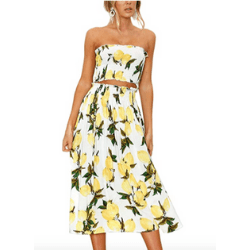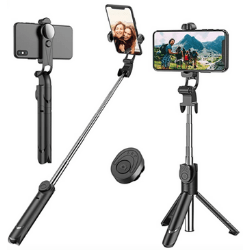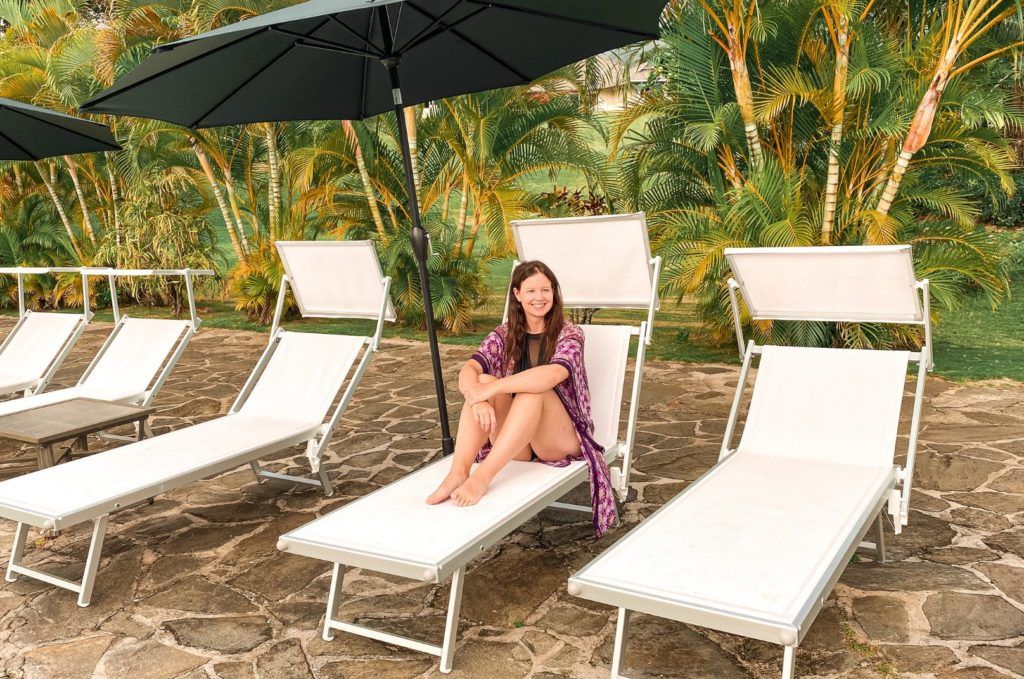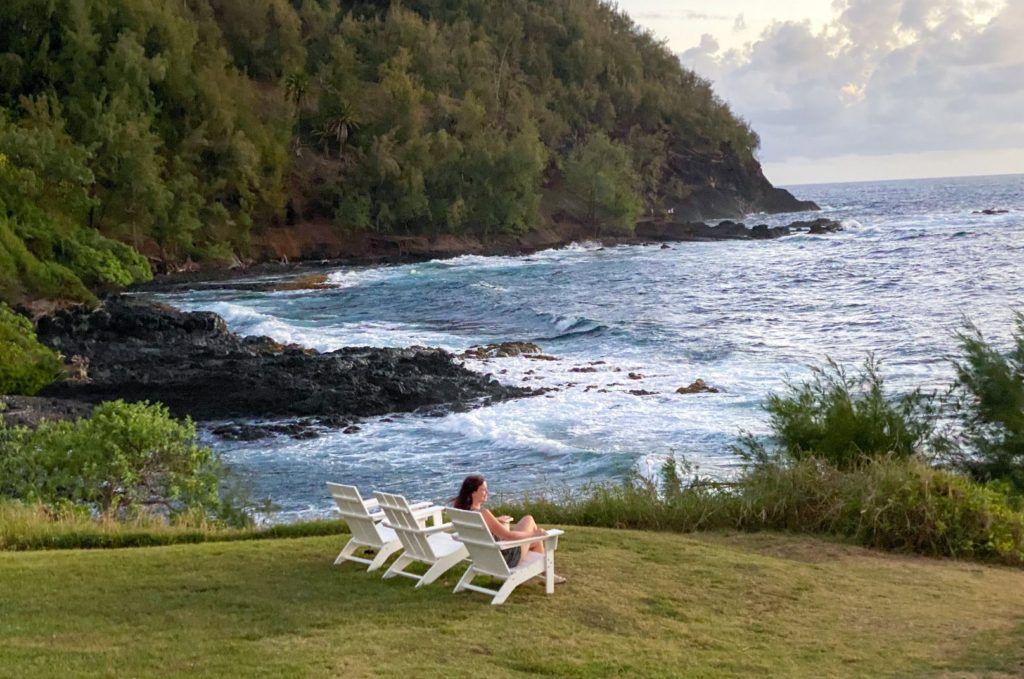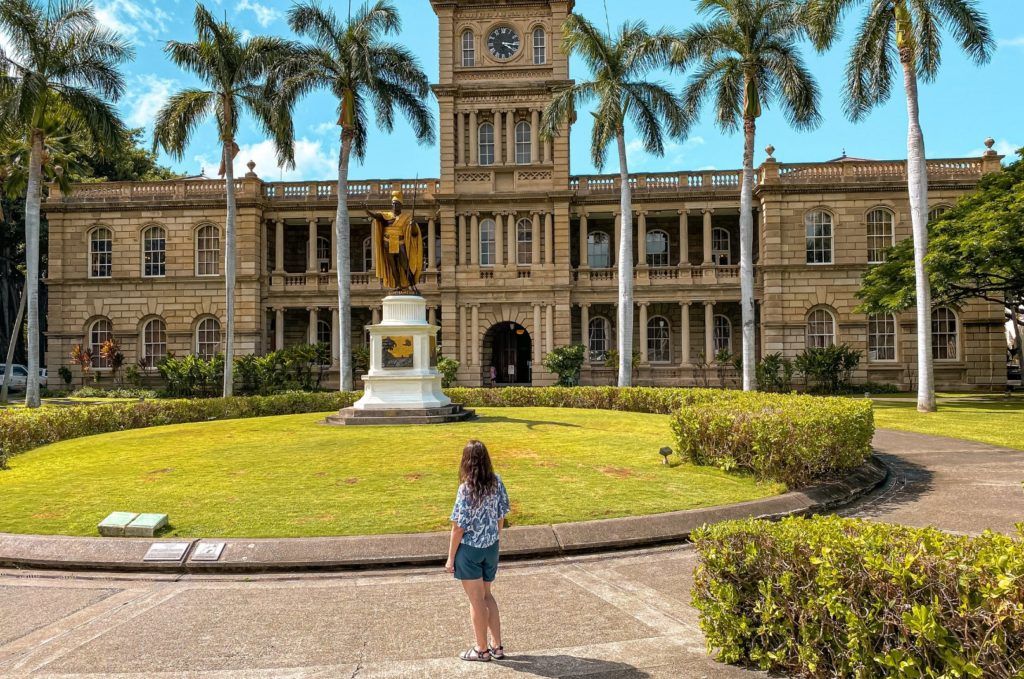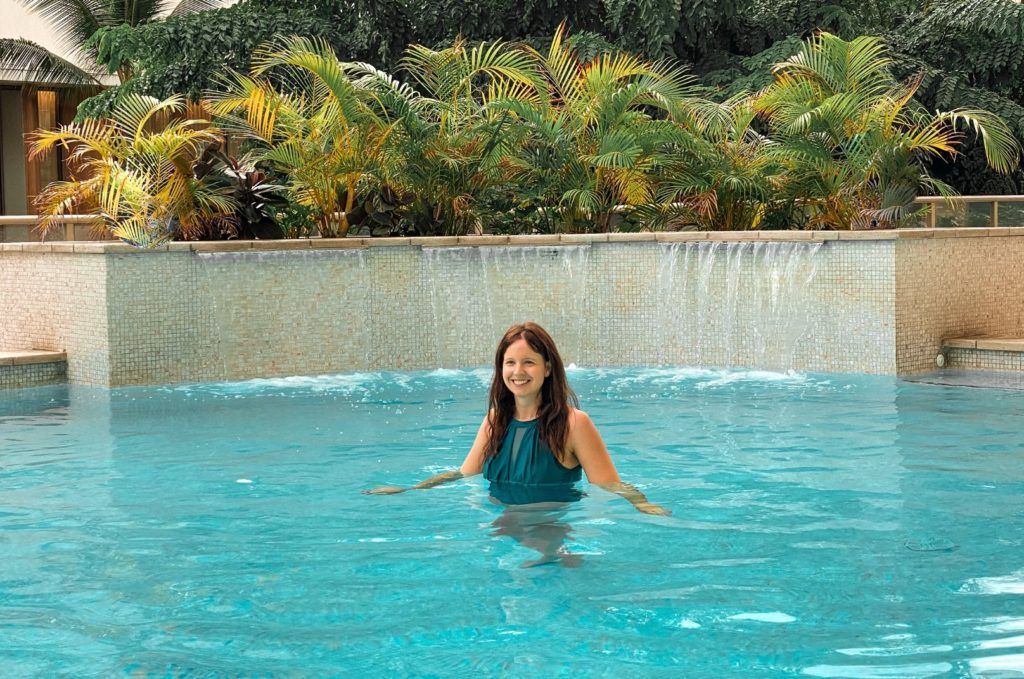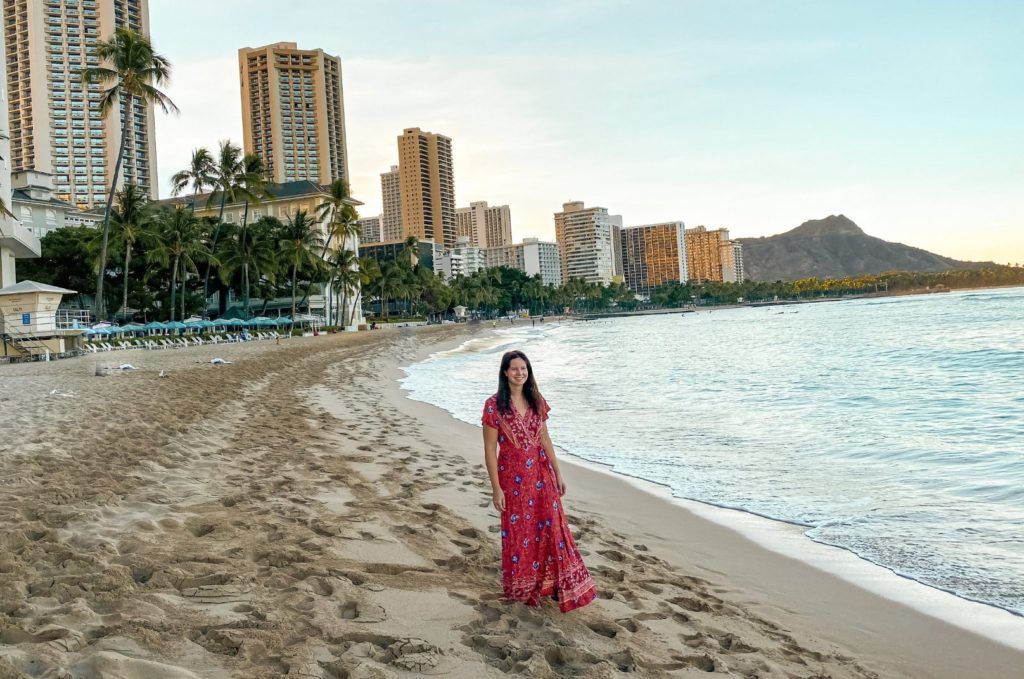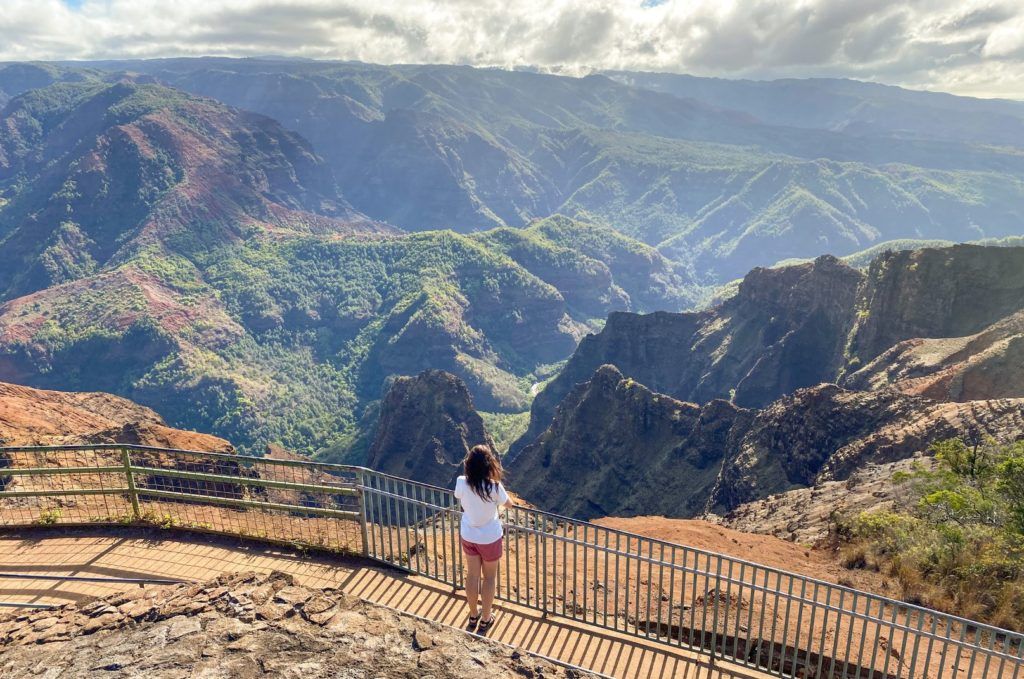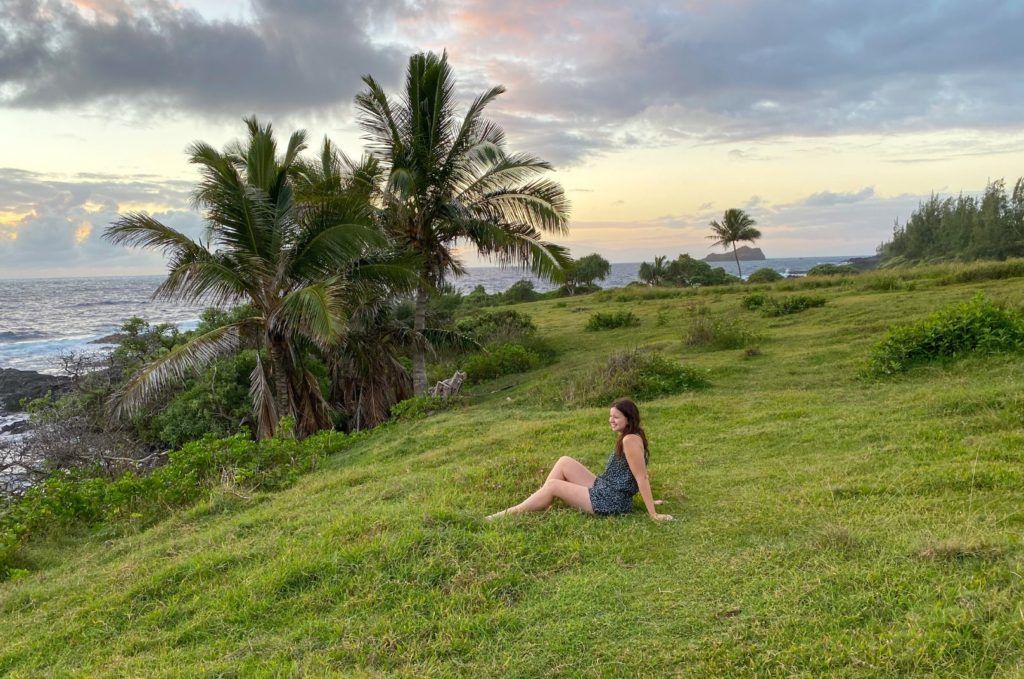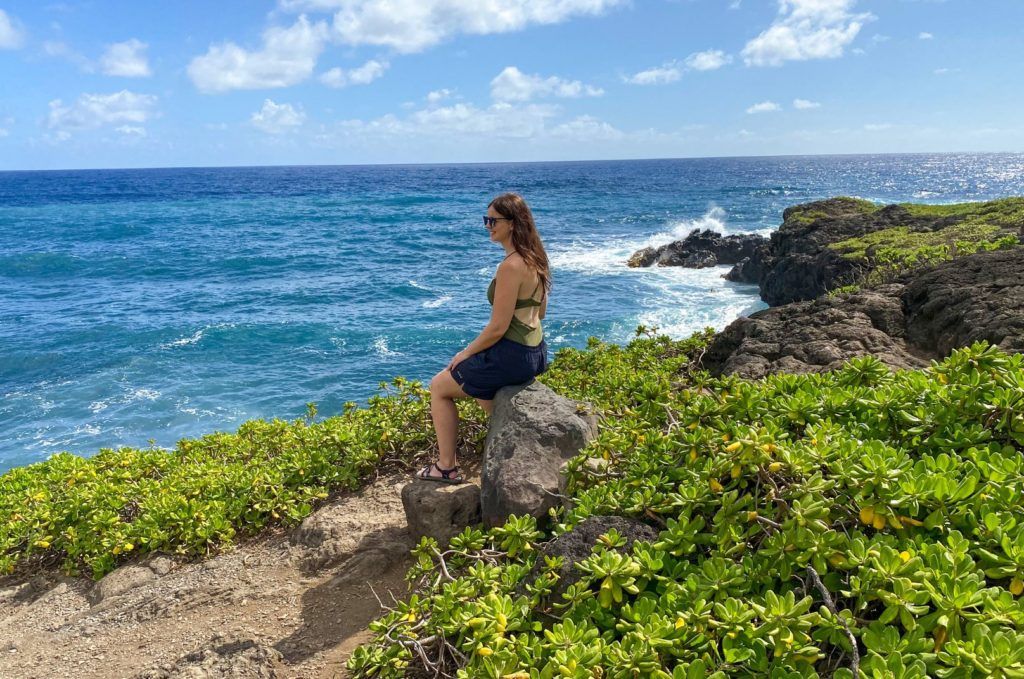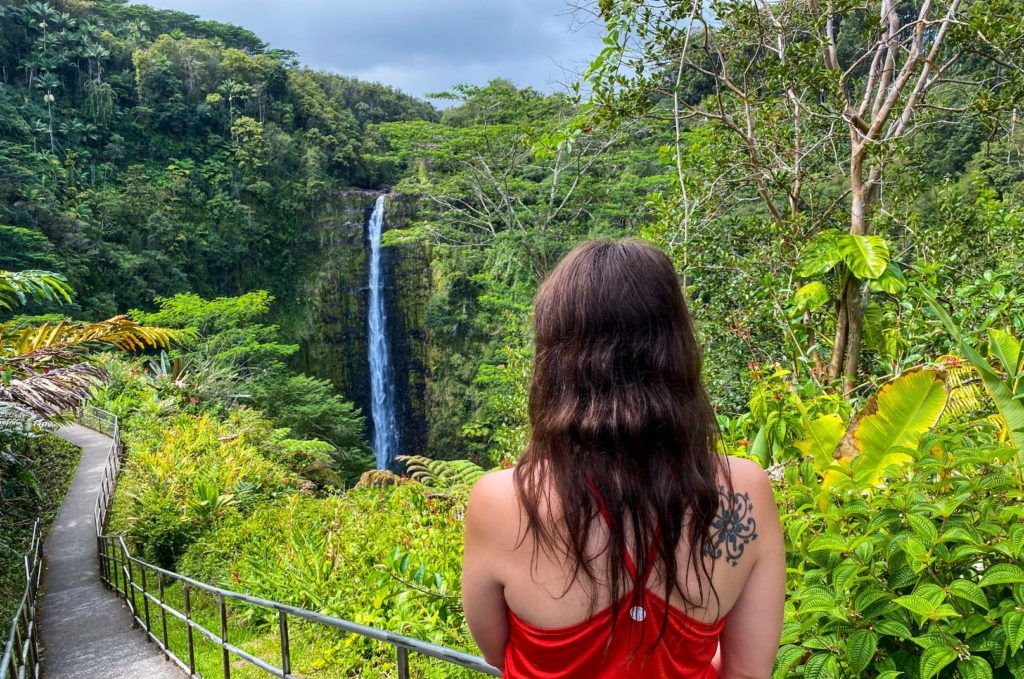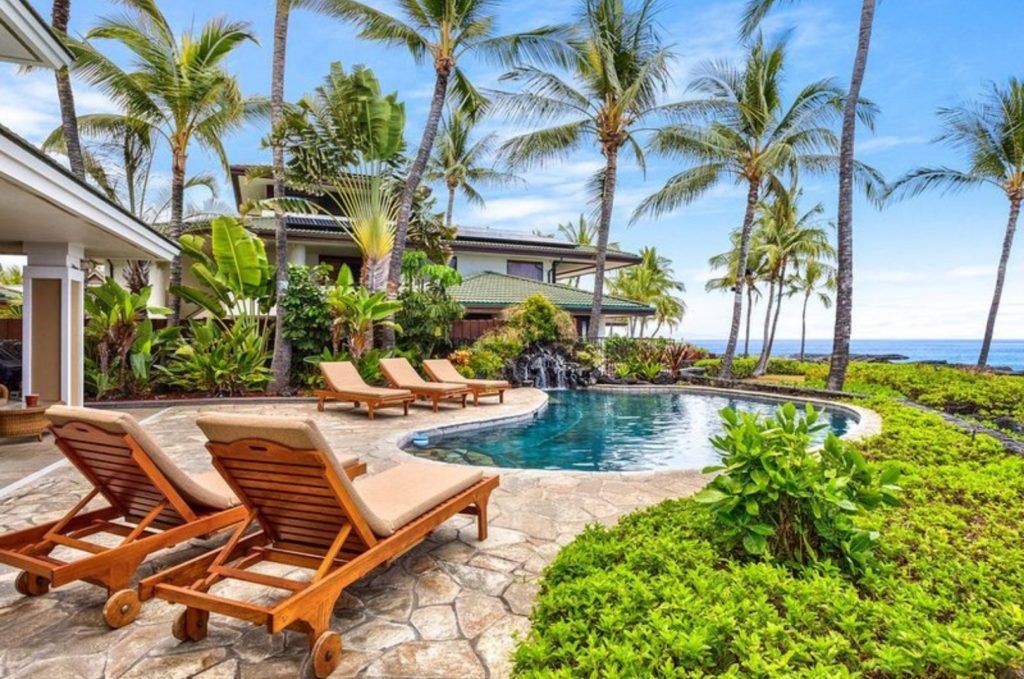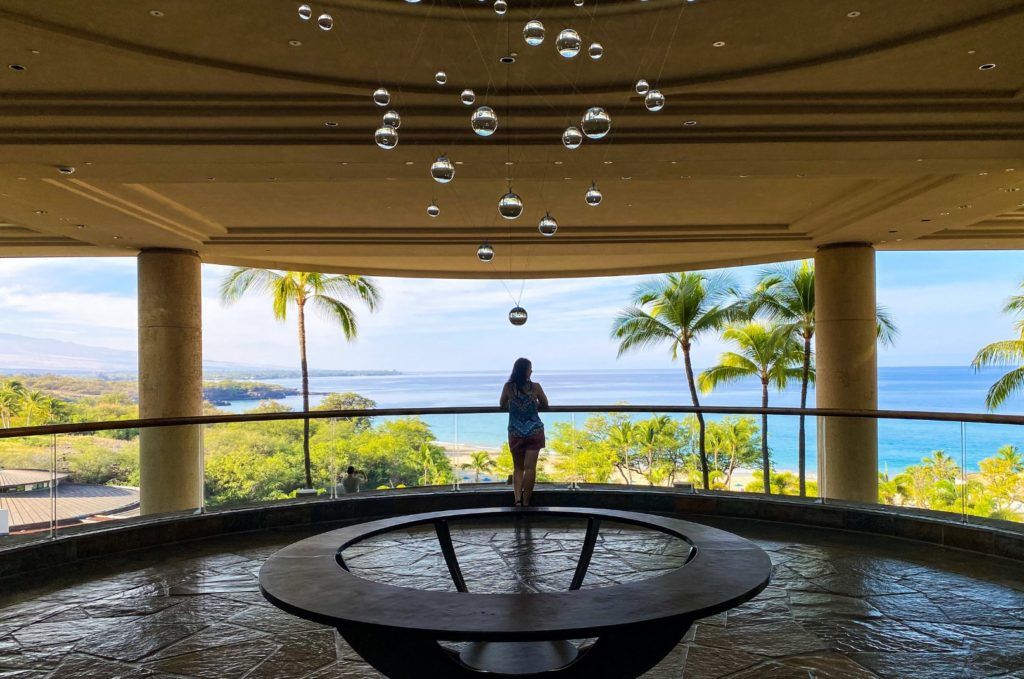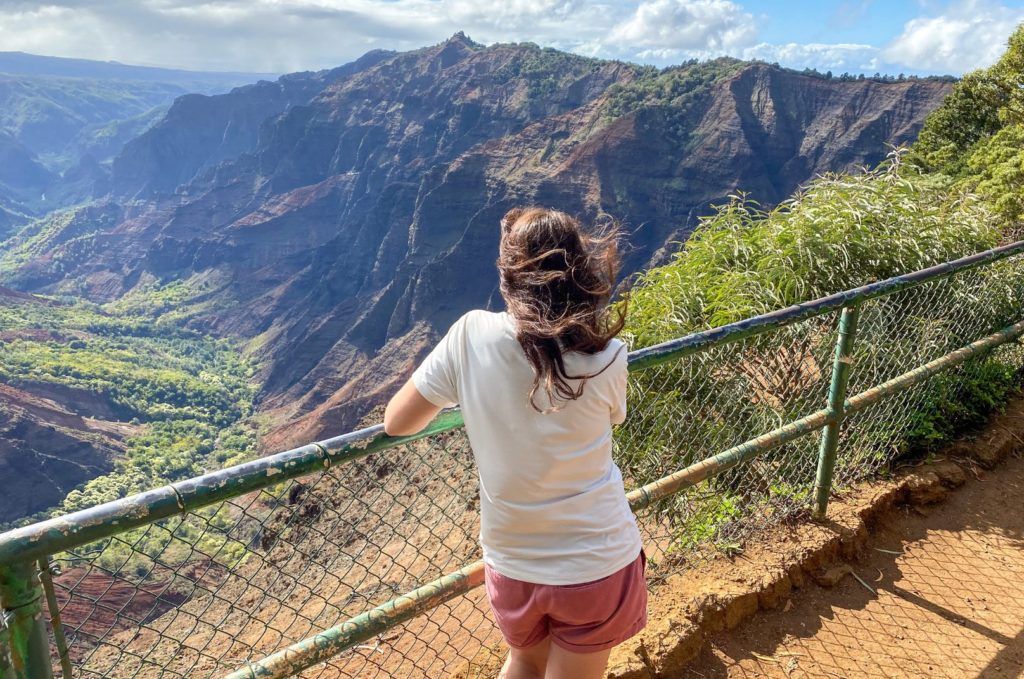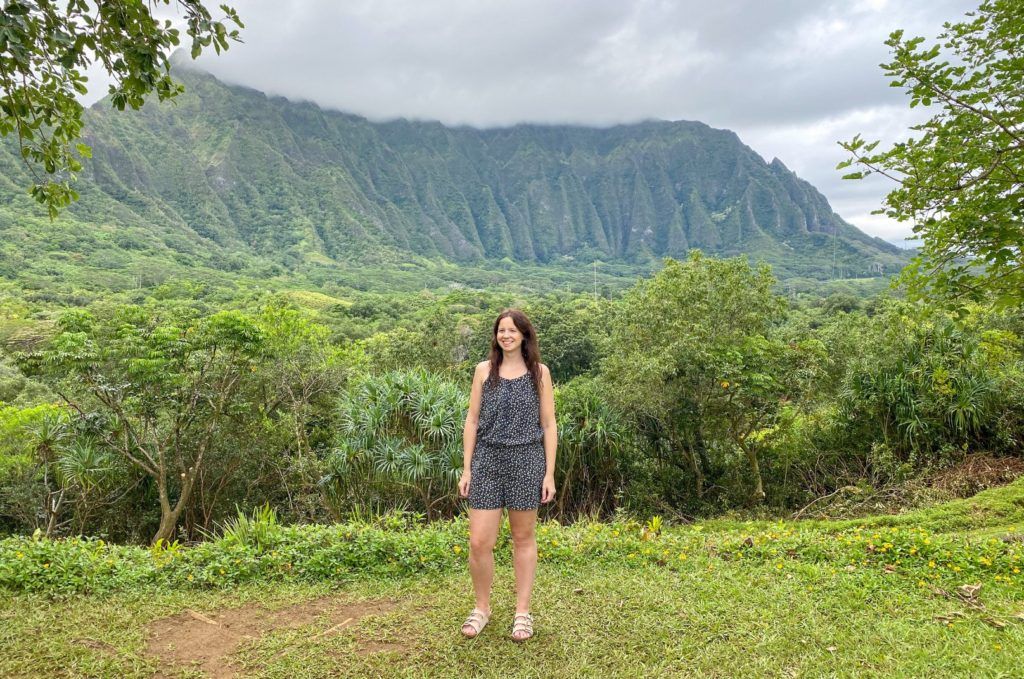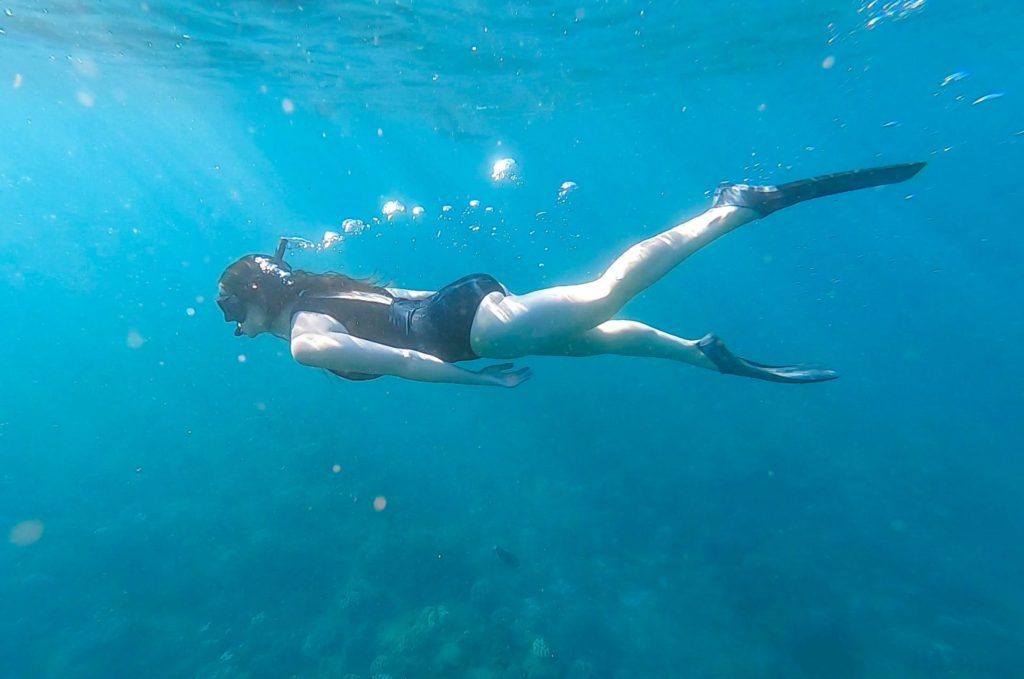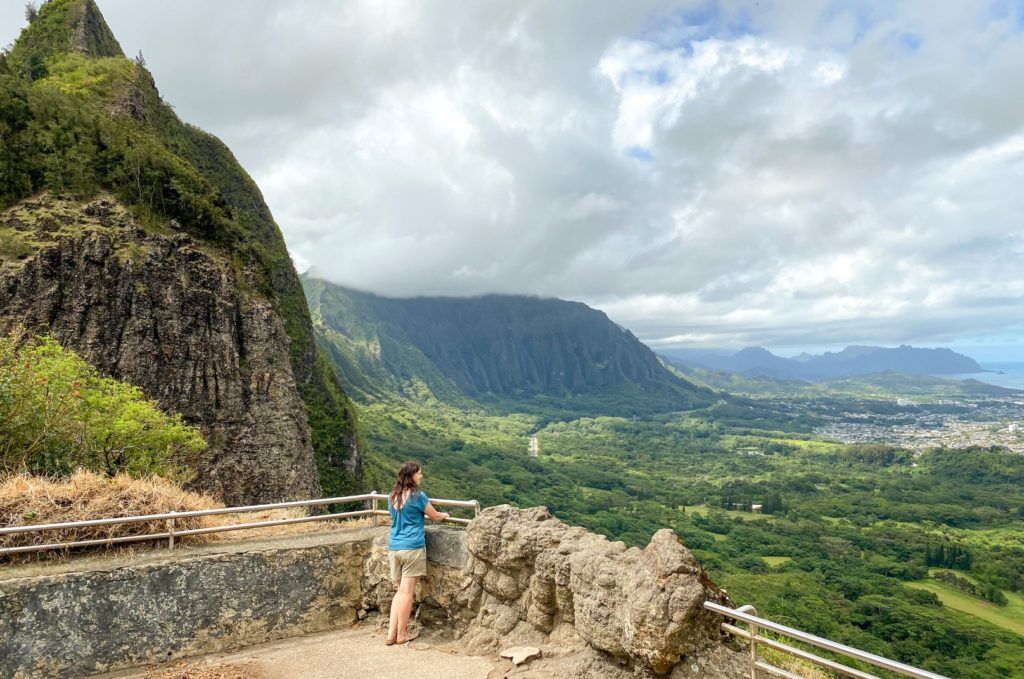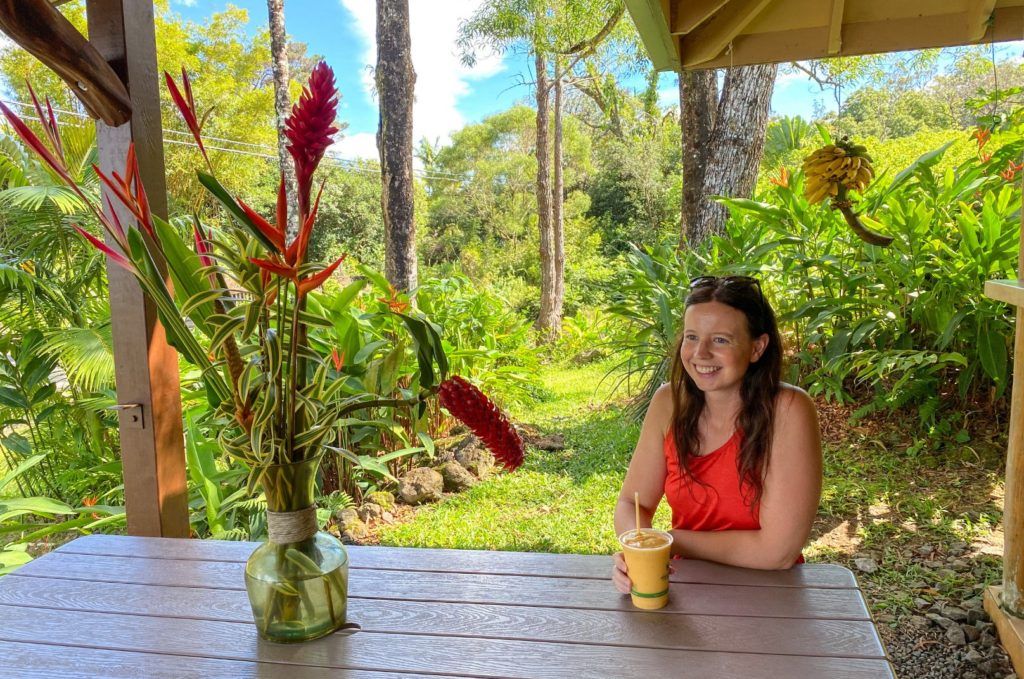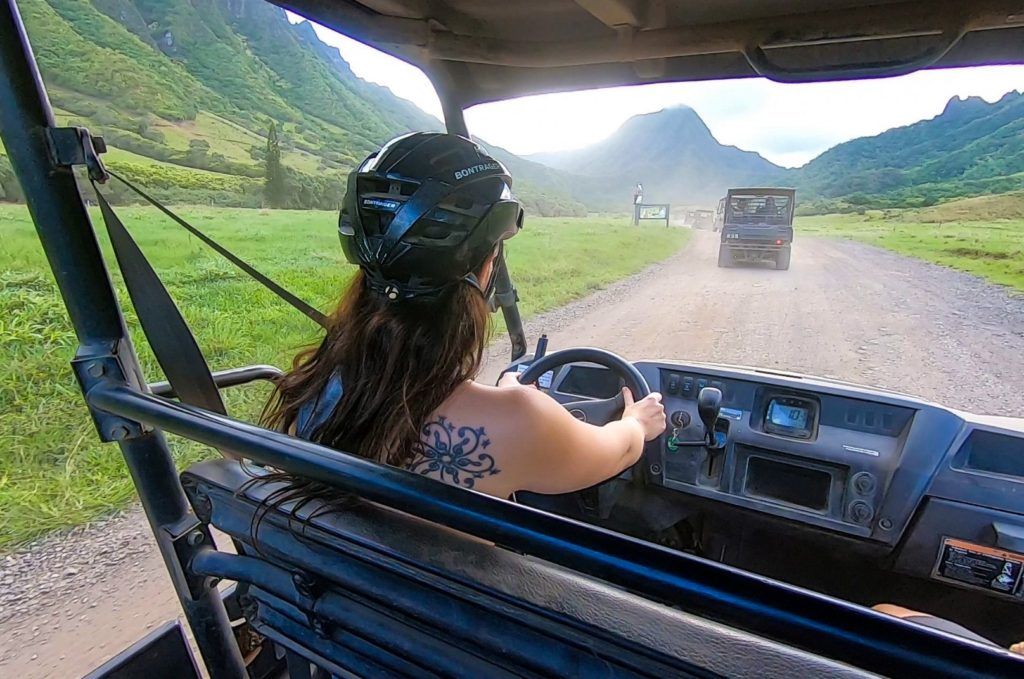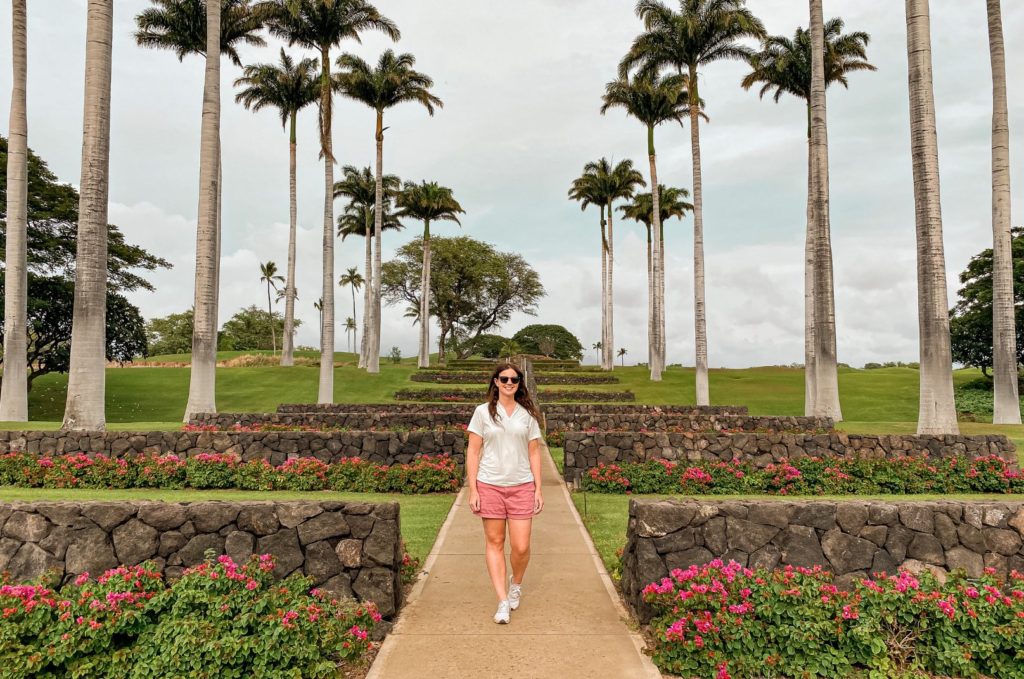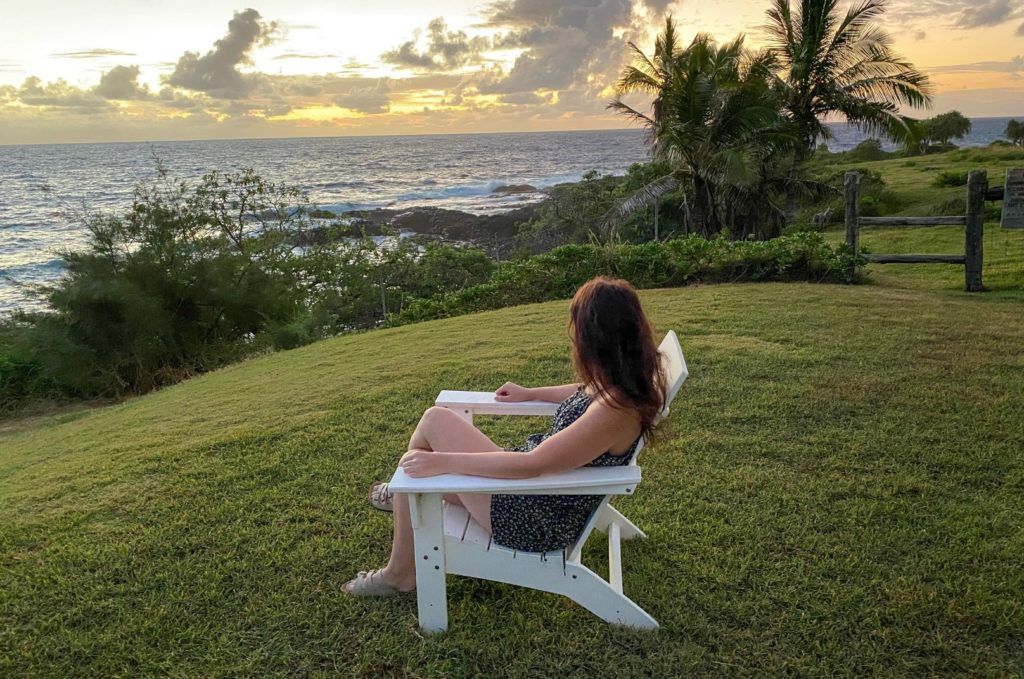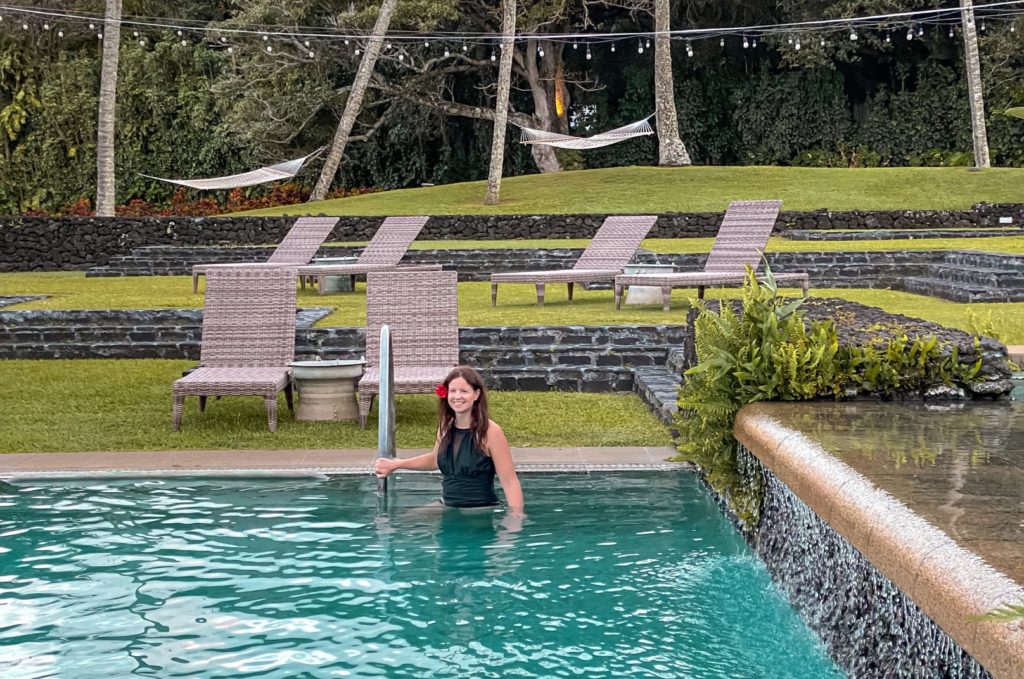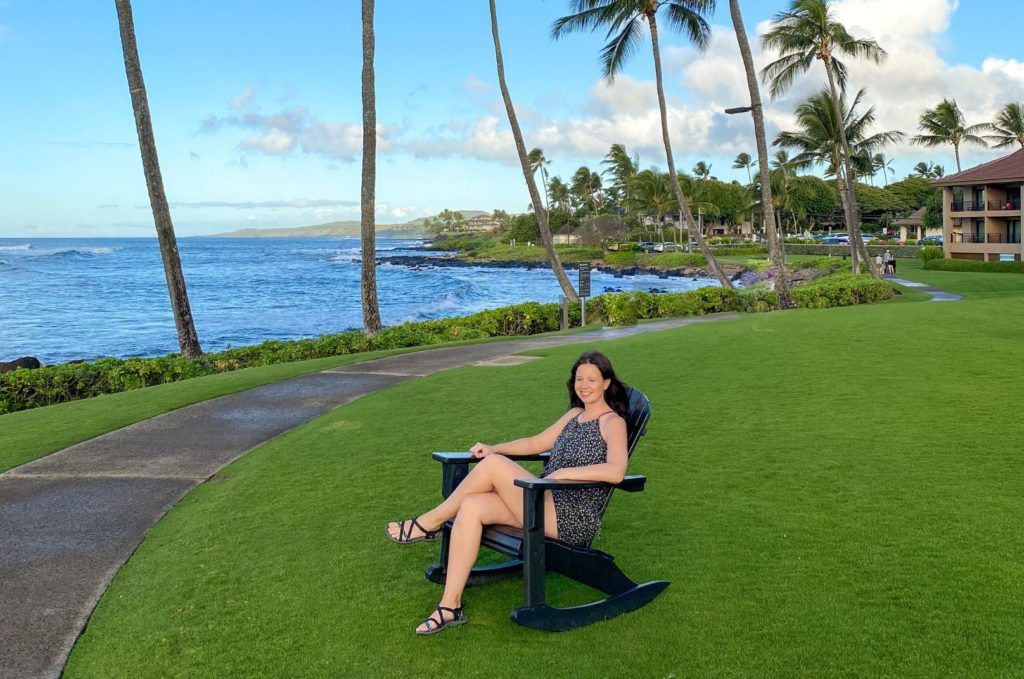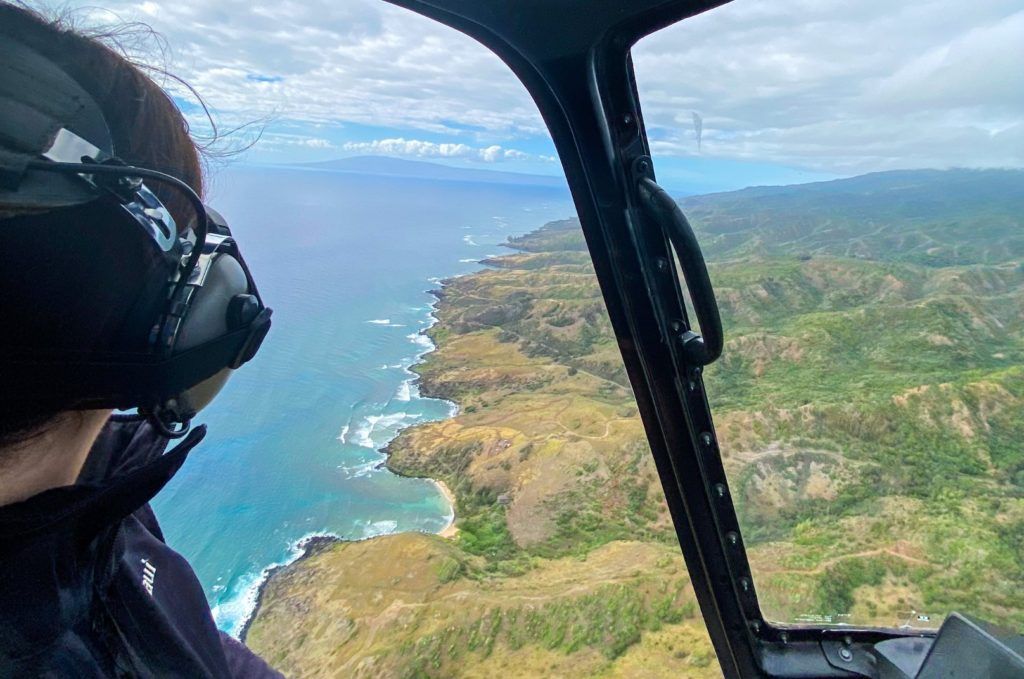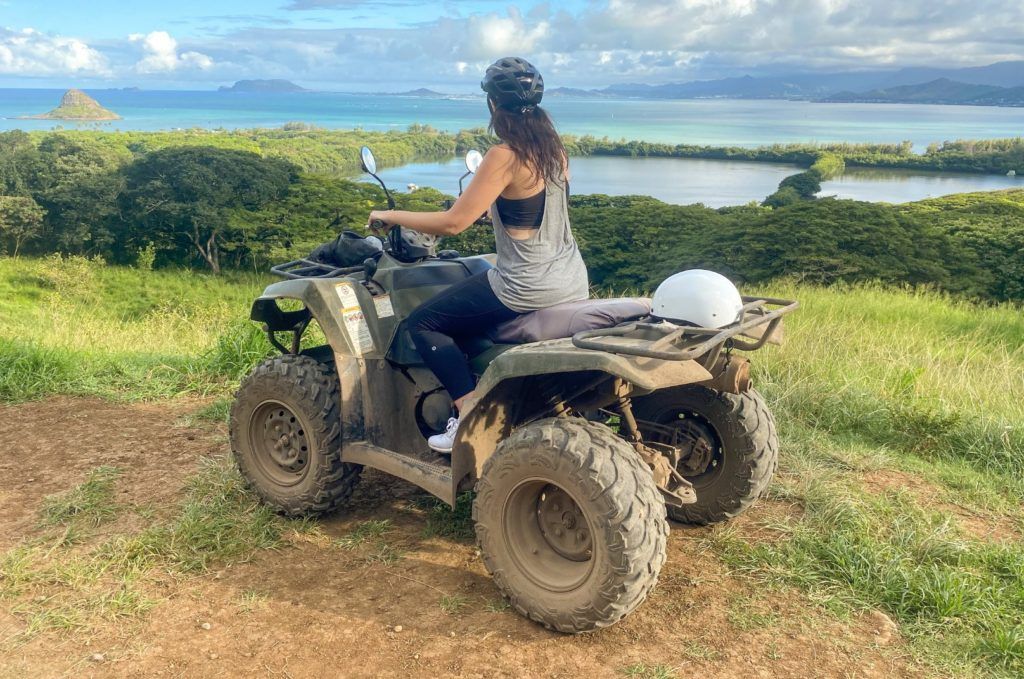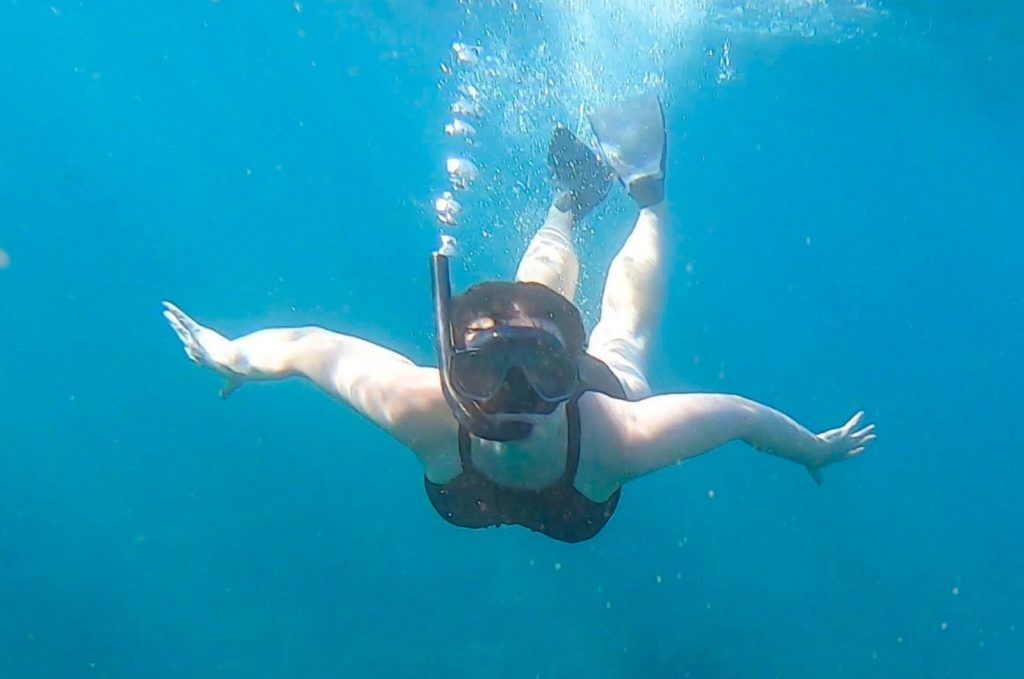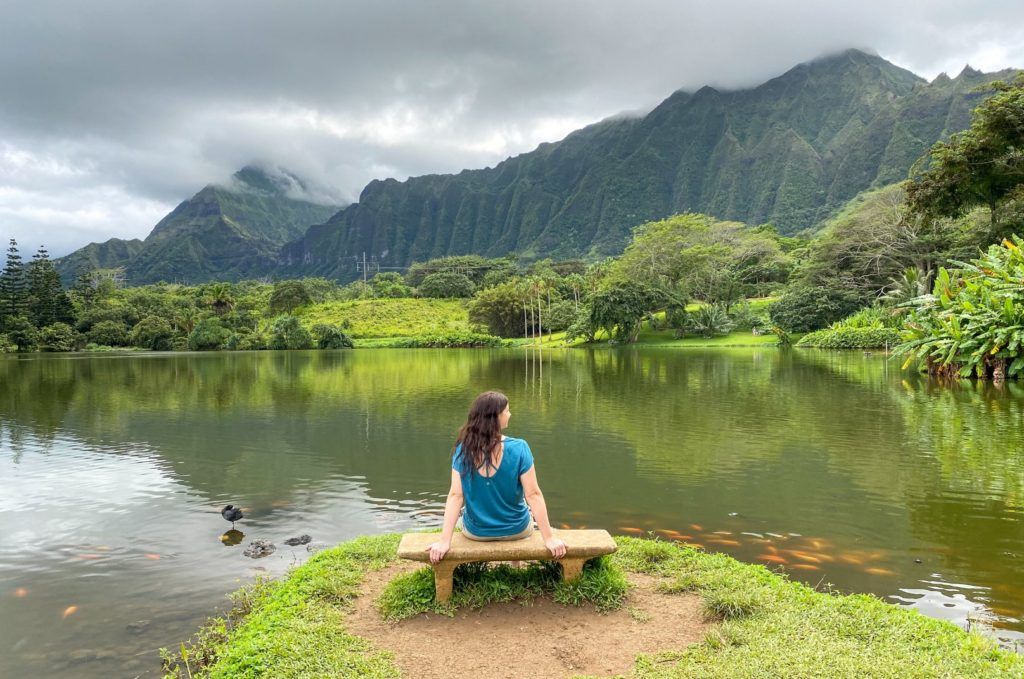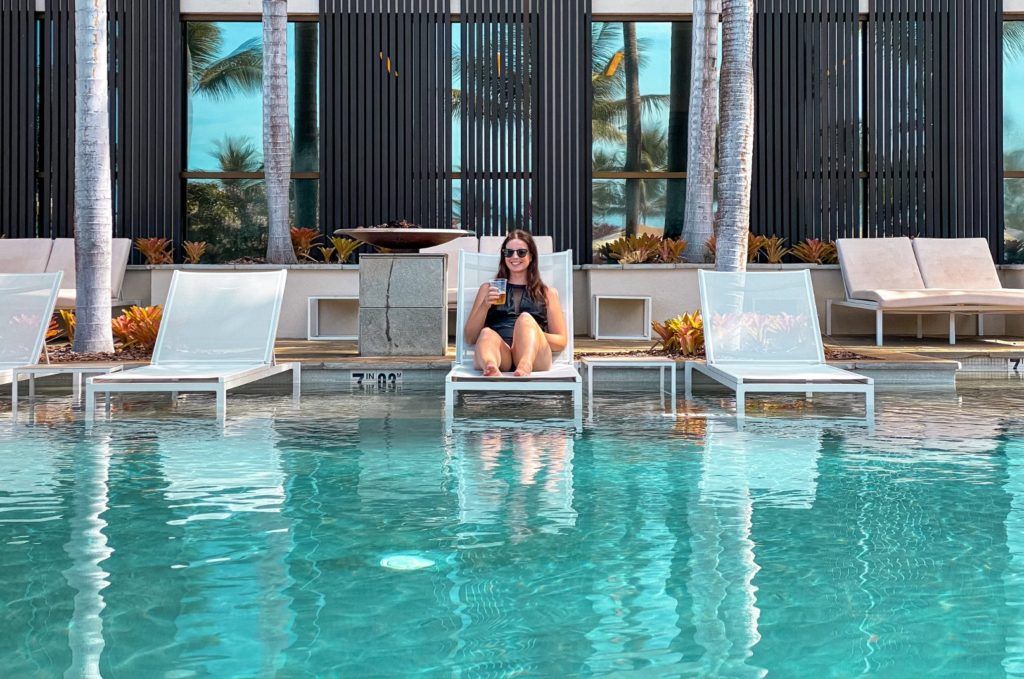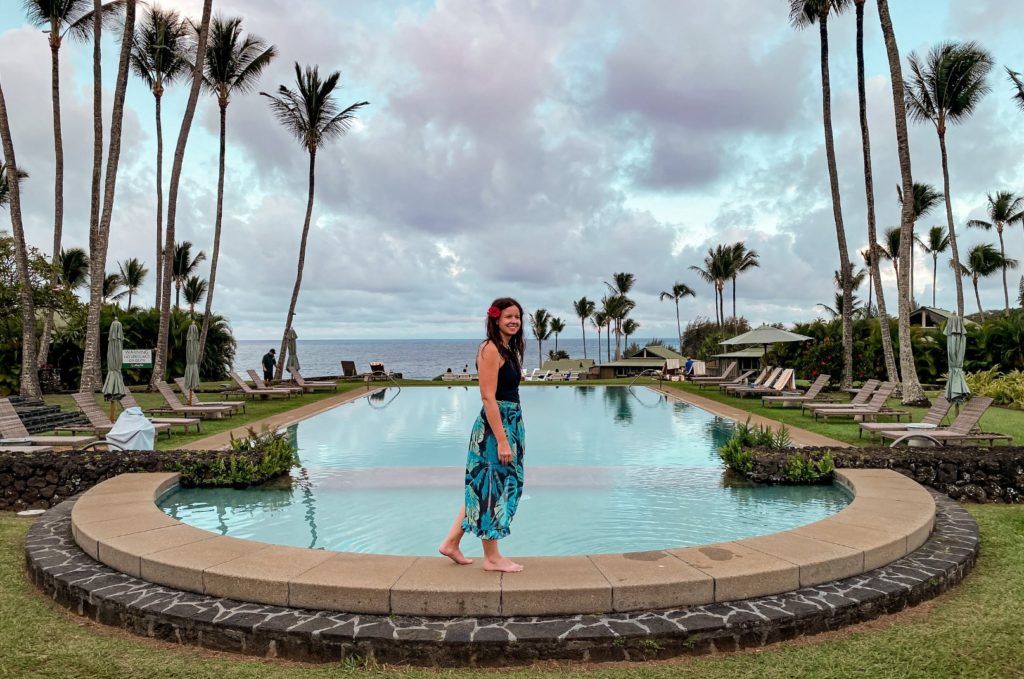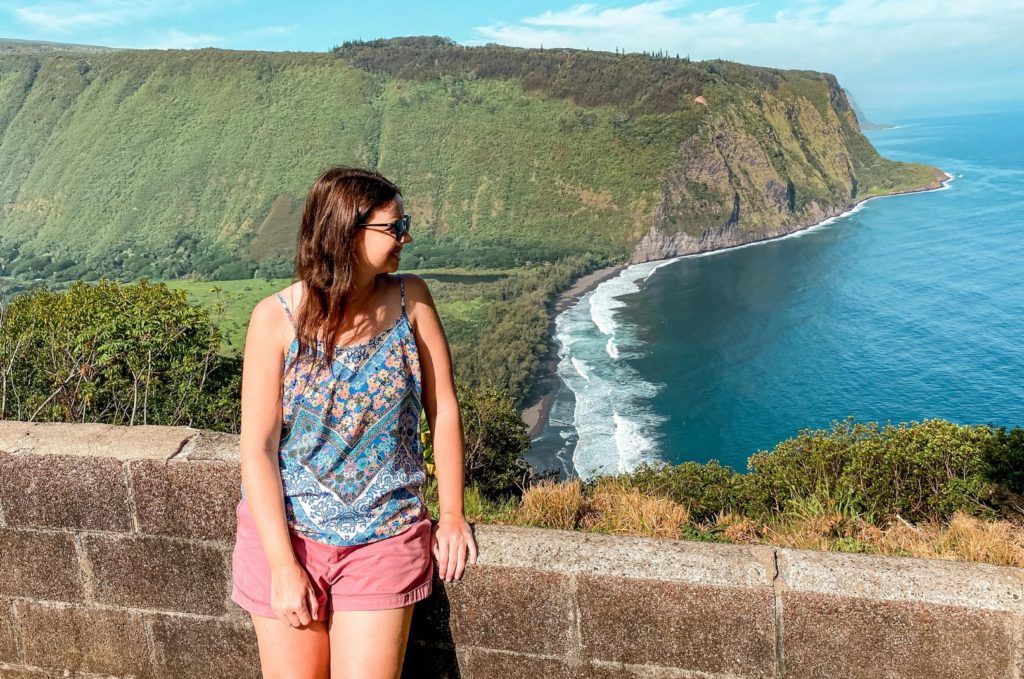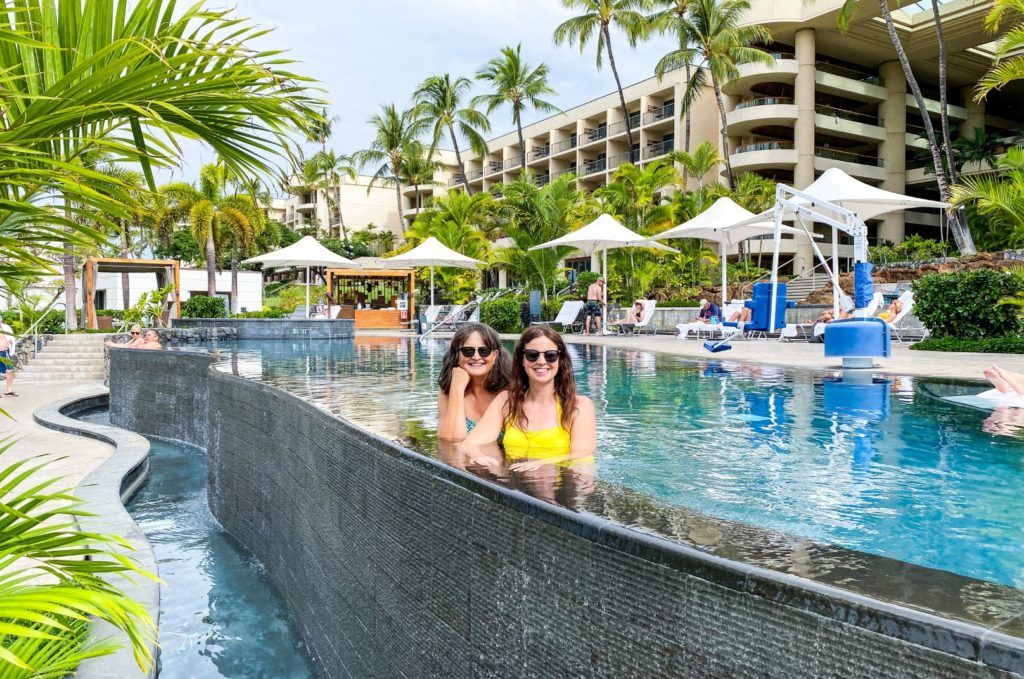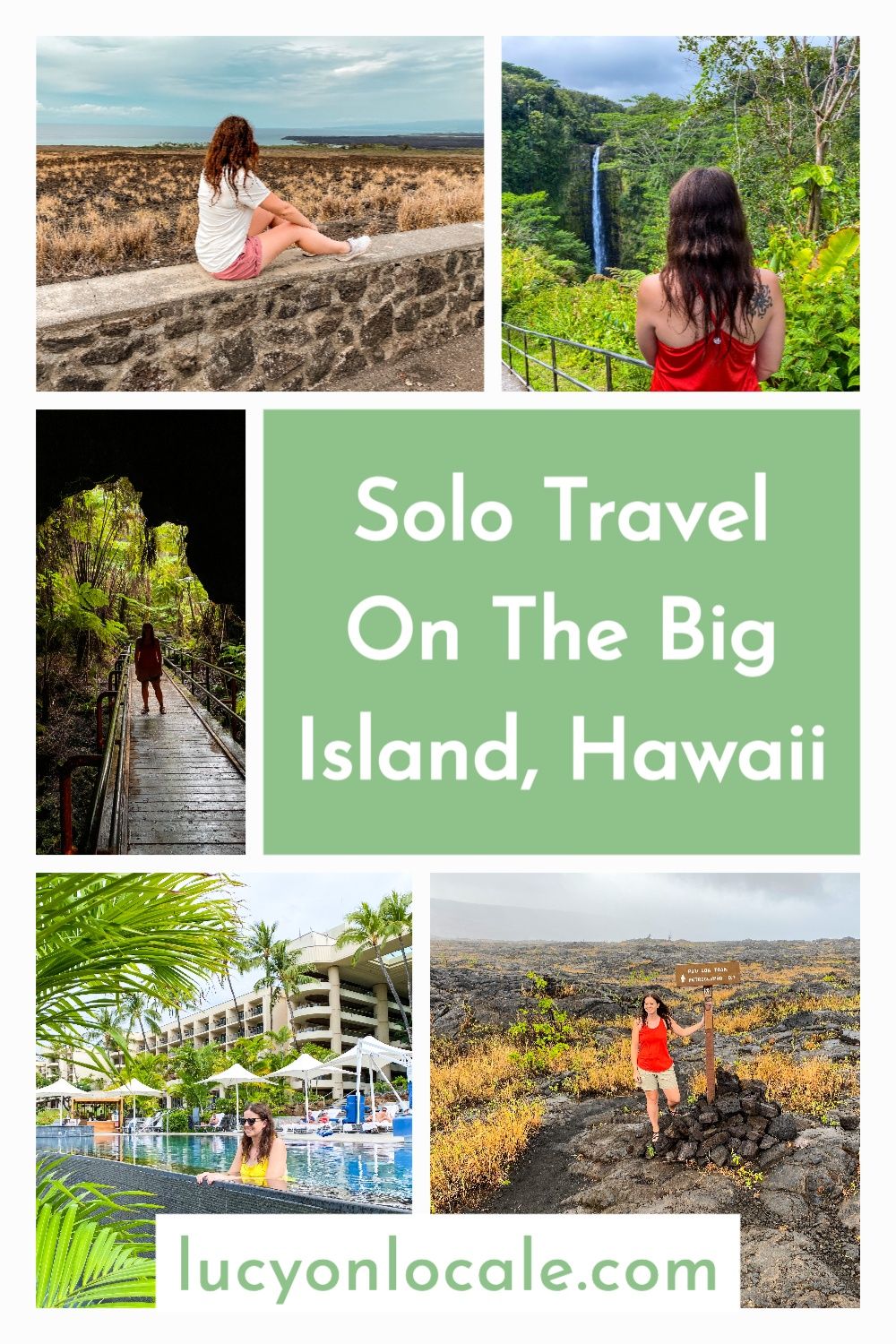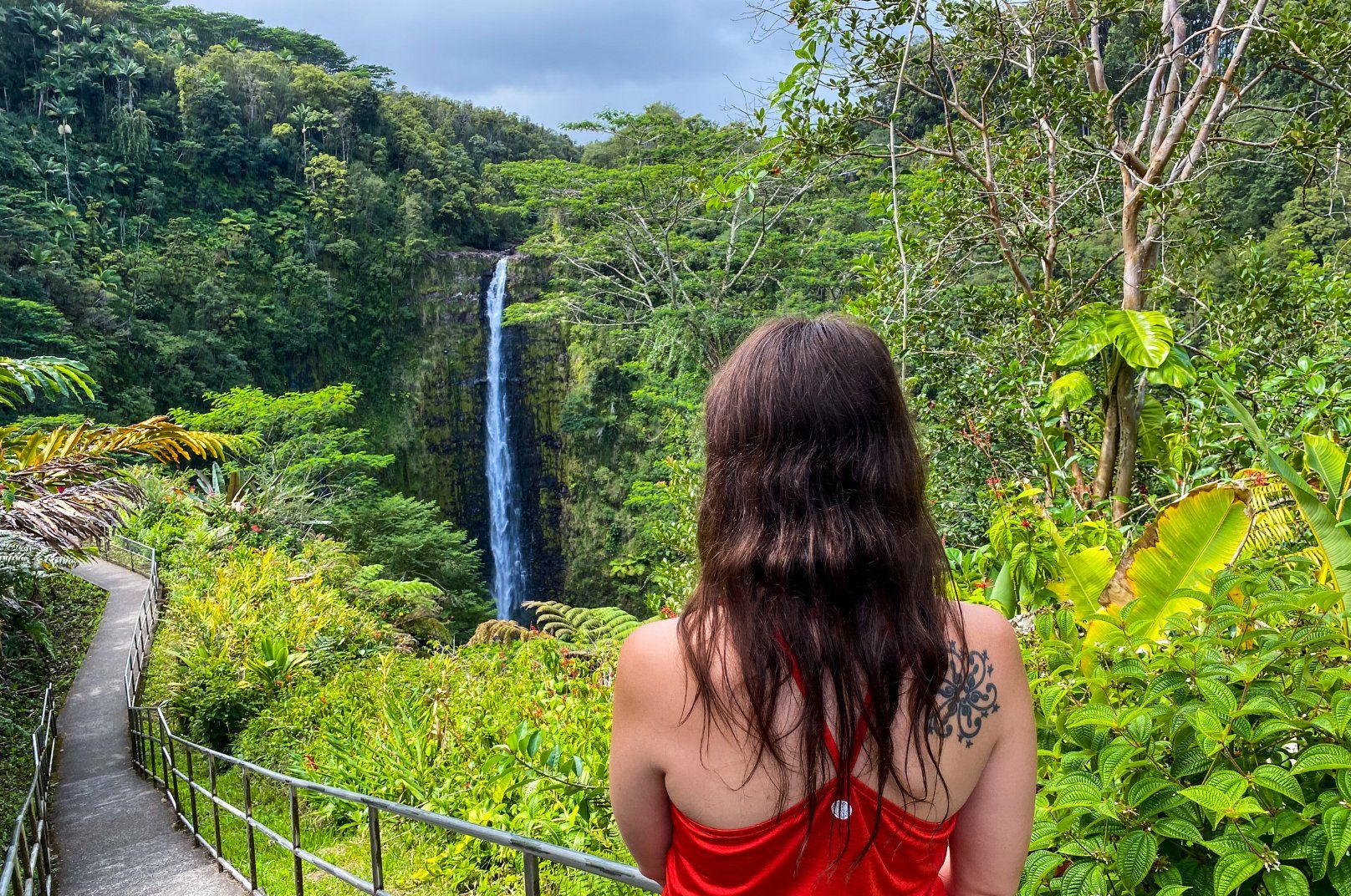
The Big Island (officially known as Hawai’i) is one of the best Hawaiian islands to visit. This island has it all – beaches, scenic drives, waterfalls, water activities, and (of course) volcanoes. So here’s how to solo travel on the Big Island.
How To Plan a Multi-Island Hawaii Trip
Fun Fact: The Big Island is the largest Hawaiian island, and it’s growing in size every day because of the active Kilauea volcano.
Here’s everything you need to know for solo travel on the Big Island!


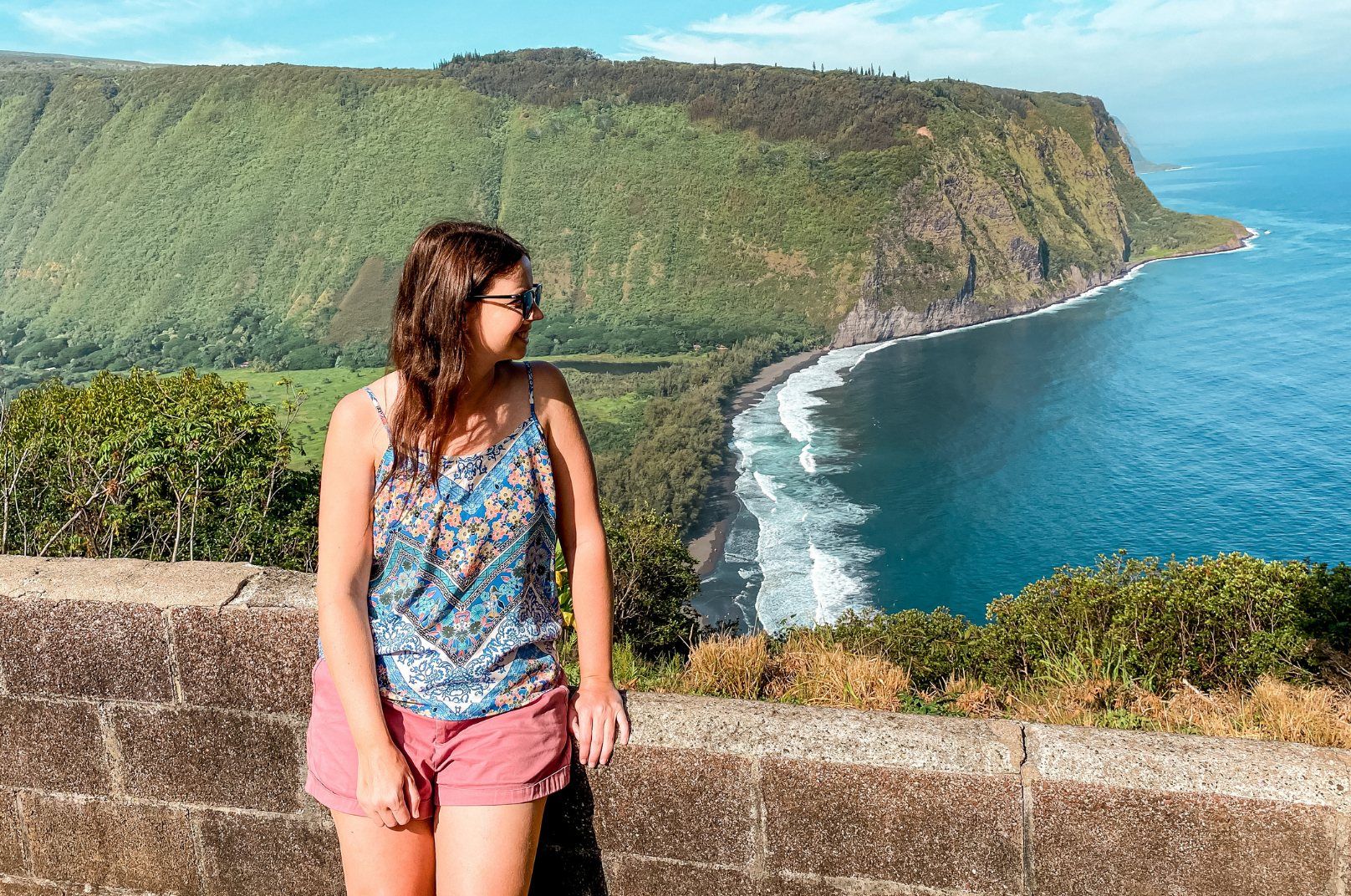
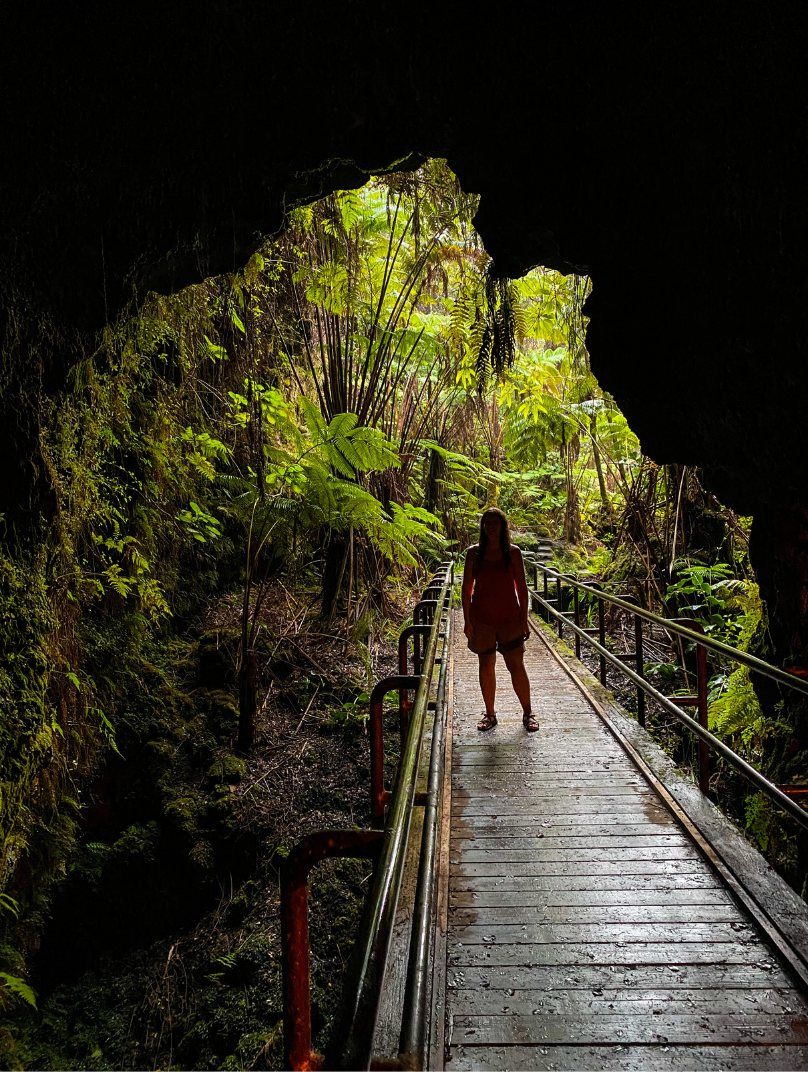
When To Go
The Big Island’s peak travel season is December – March when travelers from the Northern Hemisphere want to escape the cold. Prices and tourist numbers will be at their highest everywhere on the island. So book your accommodation, rental cars, and tours in advance to ensure availability. These are the rainiest months, so stay on the western, drier side of the island. These months have the best surfing conditions, and this is the prime whale-watching season.
June – August is only slightly less crowded and expensive than December – March. The weather is perfect during these months – sunny and dry. Summer also has calmer currents, giving you ideal swimming conditions.
The year-round warm weather means the Big Island doesn’t have an off-season. But April – May and September – November are shoulder seasons when you can score some excellent (by Hawaii standards) accommodation and airfare deals.

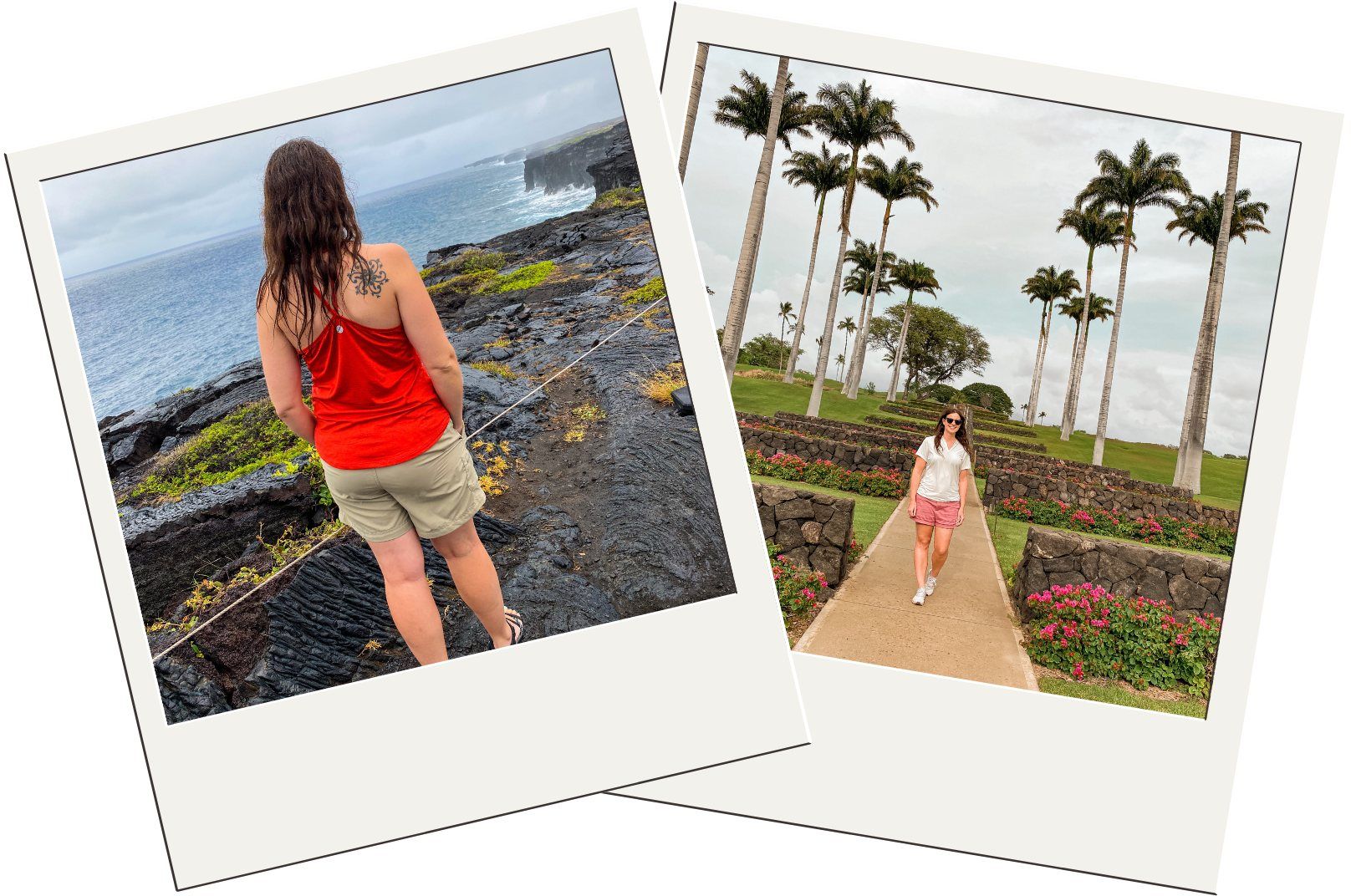
Getting Around
A car is essential on the Big Island. Many tour companies provide transportation to and from guided tours, and taxis and rideshares can be arranged by your hotel. But these can be expensive.
So if you’re going to leave your hotel more than a couple of times (which I highly recommend!), then a rental car can save you money. Plus, a rental car gives you flexibility over your itinerary and room to store and transport your belongings.
I spent three days on the Big Island with a rental car. I drove all over the island, and I only had to fill up my tank once.
Read More
Top 101 Things To Do in Hawaii
The Best Honeymoon, Birthday & Bachelorette Party Activities in Hawaii


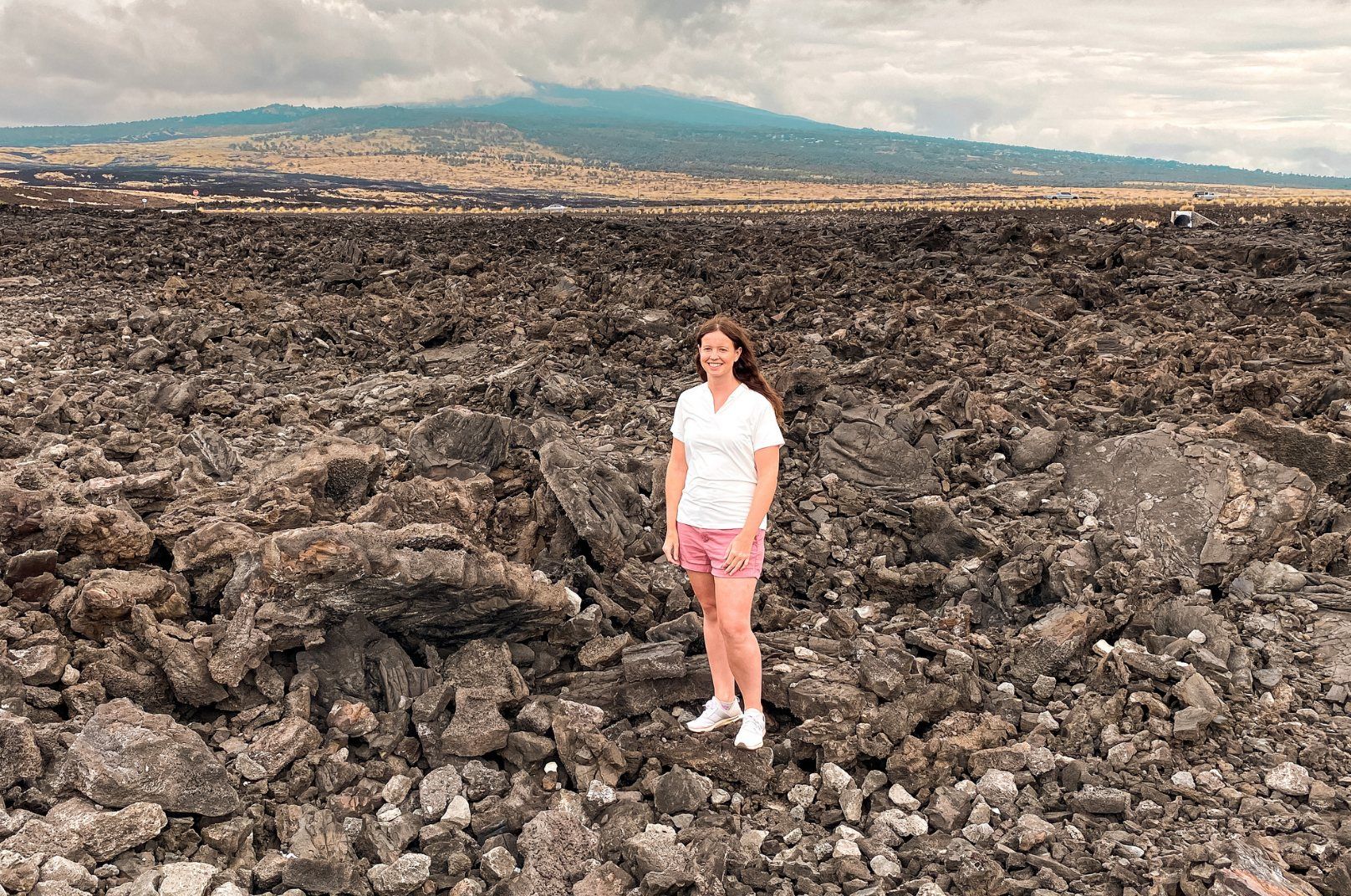
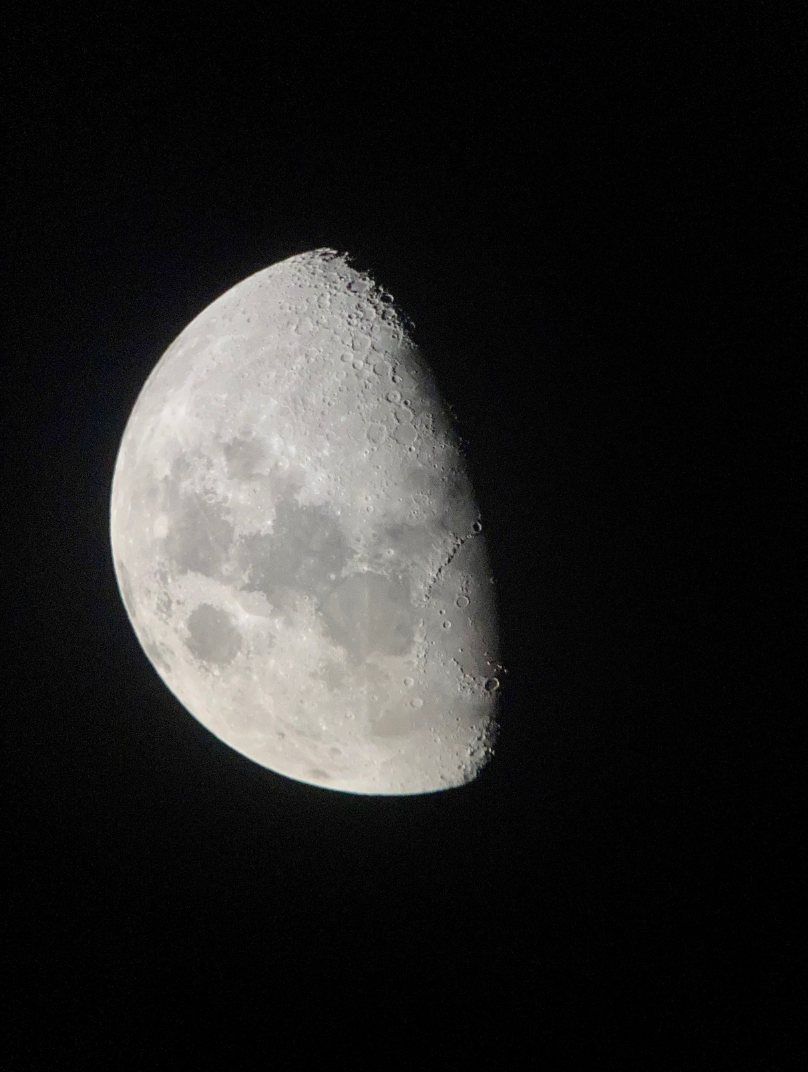
What To Do
 Do a helicopter ride (my favorite is a no-doors helicopter).
Do a helicopter ride (my favorite is a no-doors helicopter).
 Sail and snorkel along the coast.
Sail and snorkel along the coast.
 See Rainbow Falls.
See Rainbow Falls.
 Take a surf lesson.
Take a surf lesson.
 See a luau.
See a luau.
 Do a sunset and stargazing tour.
Do a sunset and stargazing tour.
 Swim with manta rays.
Swim with manta rays.
 Hike to Akaka Falls.
Hike to Akaka Falls.
 Spend some time relaxing at a beach and the pool at your hotel or rental home.
Spend some time relaxing at a beach and the pool at your hotel or rental home.
 Marvel at the views from the Waipi’o Valley Lookout.
Marvel at the views from the Waipi’o Valley Lookout.
 Visit Hawaiʻi Volcanoes National Park – drive the Chain of Craters Road, hike through the Pu’u Loa petroglyph field, walk through the Nāhuku (Thurston Lava Tube), see lava glow at night – you’ll need to check with park rangers for where to view lava.
Visit Hawaiʻi Volcanoes National Park – drive the Chain of Craters Road, hike through the Pu’u Loa petroglyph field, walk through the Nāhuku (Thurston Lava Tube), see lava glow at night – you’ll need to check with park rangers for where to view lava.

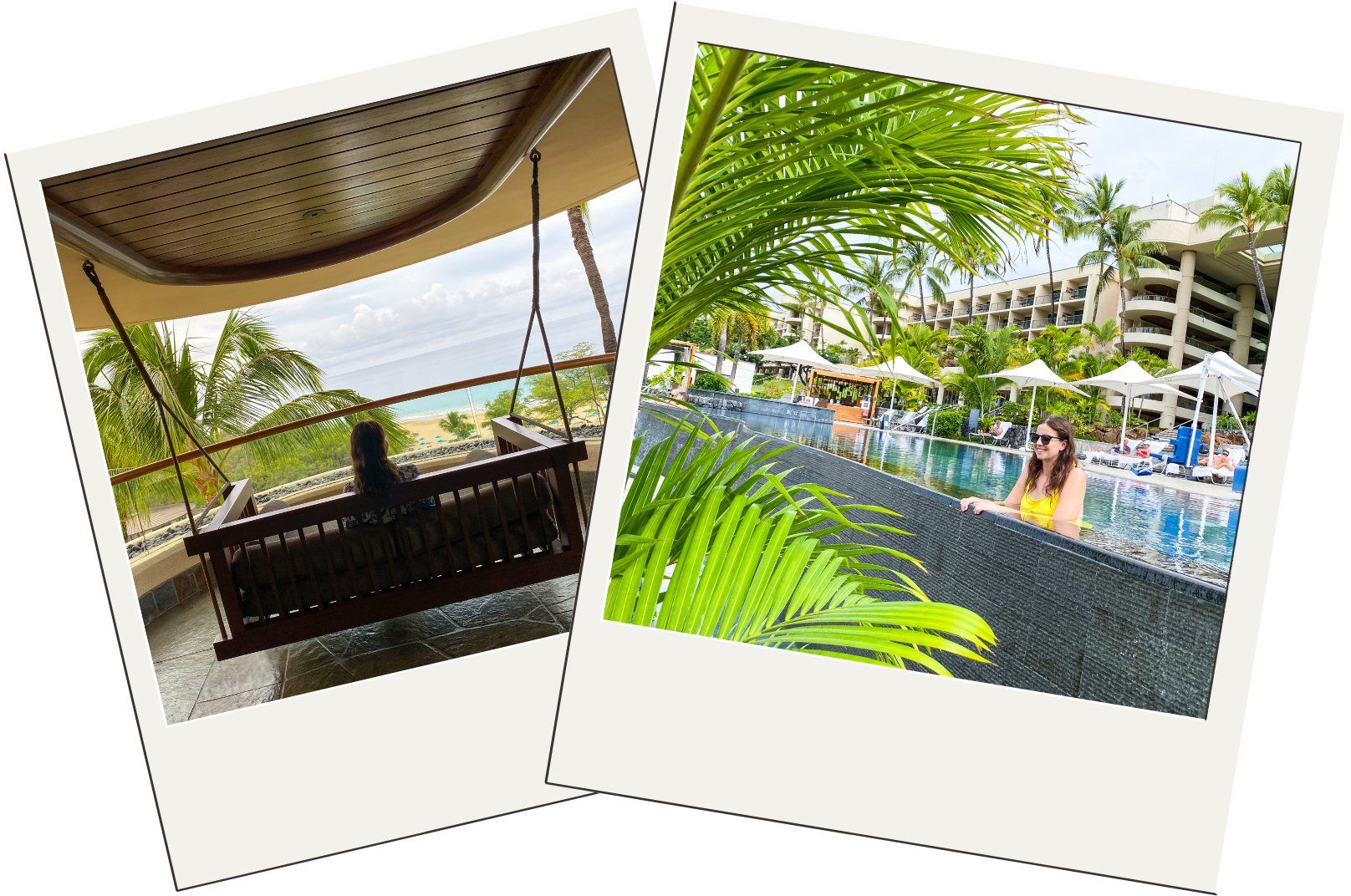
Where To Stay
Most people who visit the Big Island stay on the western (and drier) side of the island and visit Hawaiʻi Volcanoes National Park as a day trip. I recommend splitting your trip to spend your first couple of nights in the At the Crater’s Edge adults-only hotel to explore the island’s national park and eastern side. Then spend the rest of your trip on the island’s western side (my favorite hotel is the Westin Hapuna Beach Resort).
So I’ve rounded up the best hotels on the Big island for every budget and preference, and the island also has some incredible vacation homes.


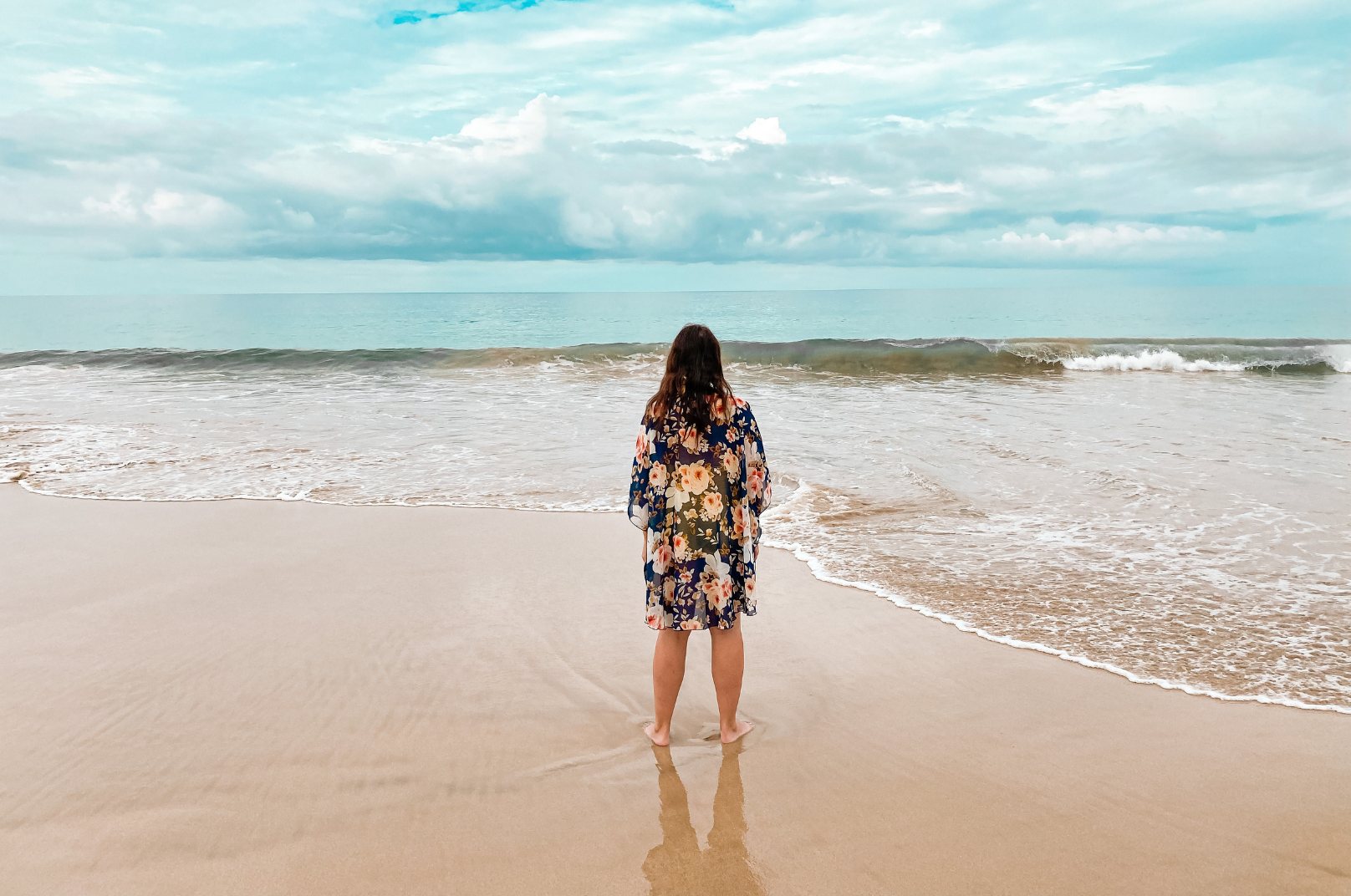
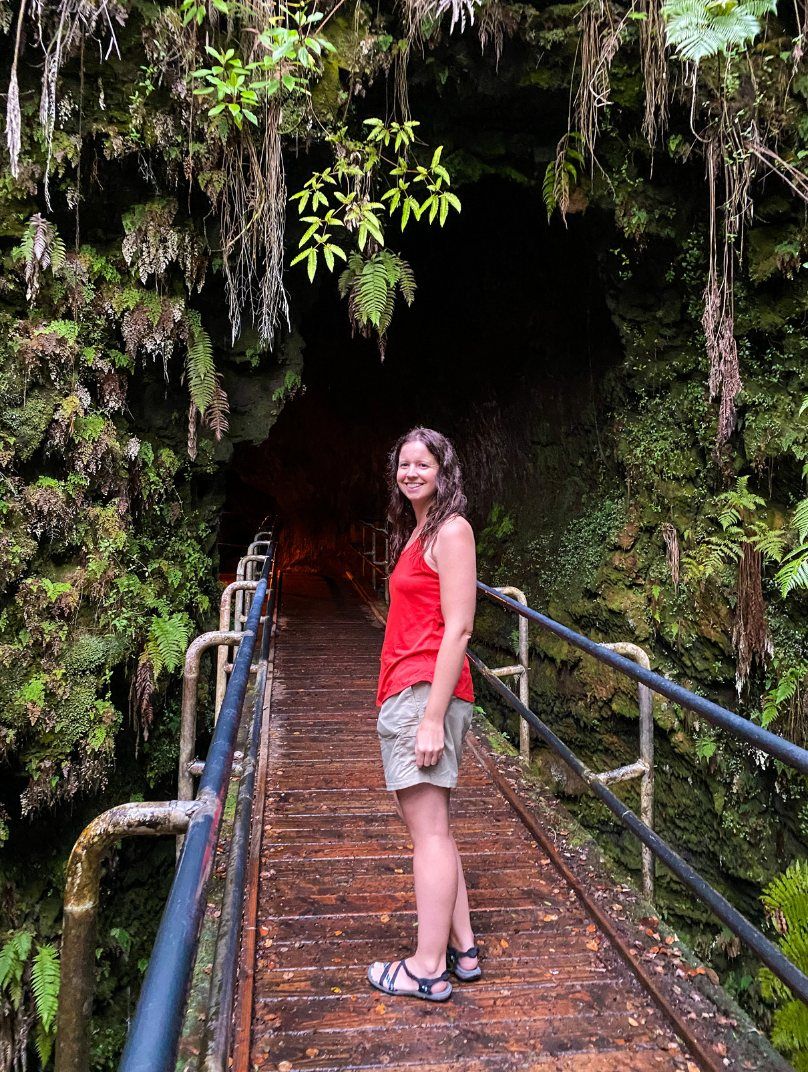
Suggested Itinerary
Day 1: Arrive on the Big Island, pick up your rental car, and head to your hotel near Hawai’i Volcanoes National Park (my top choice is the Volcano House). Then this evening, hike to where you can see lava glow at night (you’ll need to check in with park rangers for where to view lava).
Day 2: Spend this day exploring Hawai’i Volcanoes National Park. Drive the Chain of Craters Road, hike through the Pu’u Loa petroglyph field, walk through the Nāhuku (Thurston Lava Tube), and eat at The Rim at Volcano House. At night, drive to where you can see the lava glow from a different vantage point than where you hiked last night.
Day 3: Check out of your hotel and take the scenic route along the Mamalahoa Highway (Hwy. 19) to the west side of the island. On your way, make sure you visit Rainbow Falls, hike to Akaka Falls, and marvel at the views from the Waipi’o Valley Lookout. Then check into your hotel (my favorite is the Westin Hapuna Beach Resort), and swim with manta rays at night.
Day 4: In the morning, do a helicopter ride (my favorite is a no-doors helicopter). Then in the afternoon, spend some time relaxing at your hotel’s beach or pool. End your day by seeing a luau.
Day 5: Start your day by sailing and snorkeling along the coast. In the afternoon, take a surf lesson, then do a Mauna Kea sunset and stargazing tour at night.
Day 6: Fly home or to another Hawaiian Island.

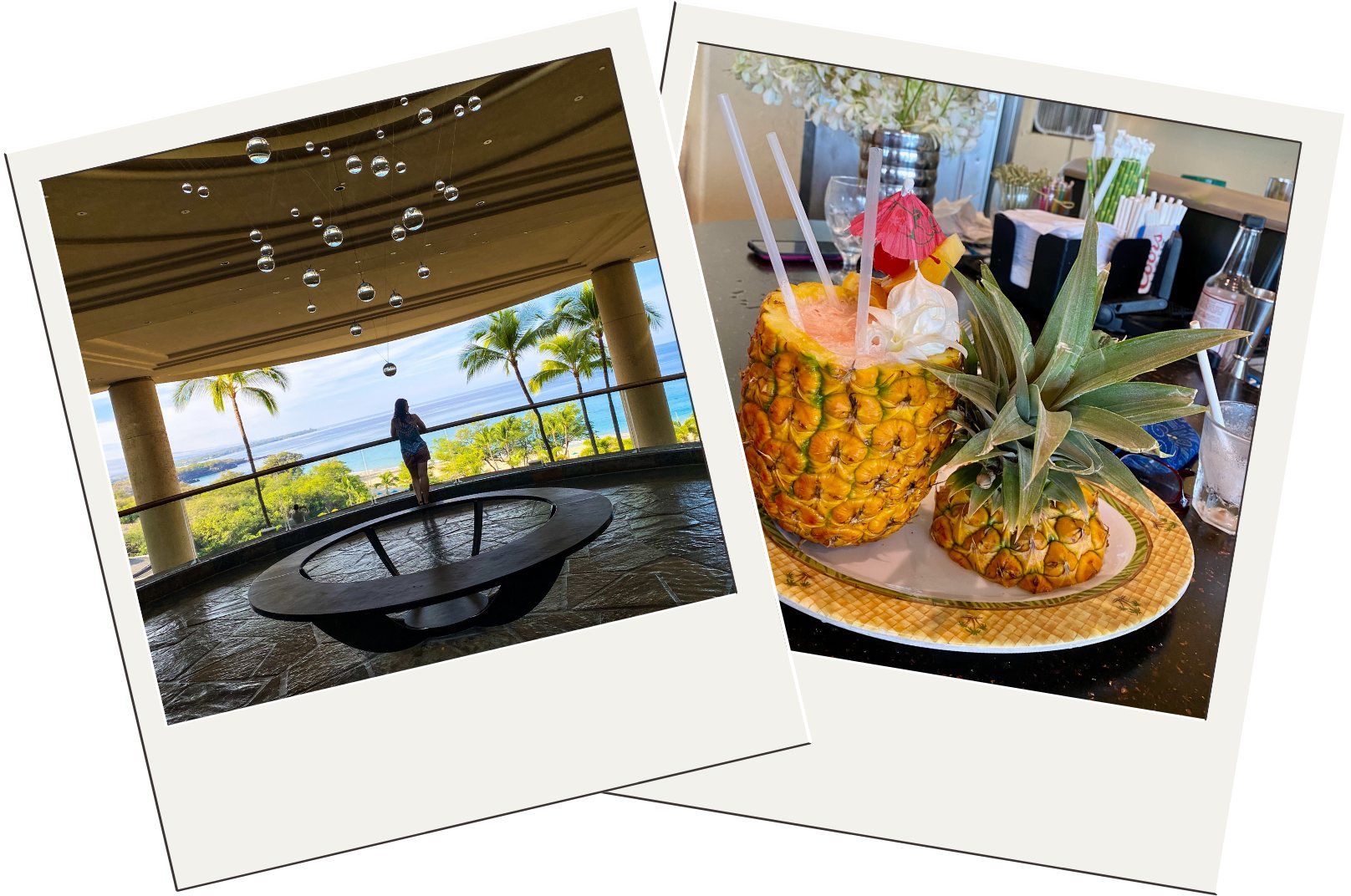
Where To Eat
Hilo: Pineapple’s Island Fresh Cuisine (American, Bar, $$-$$$), Paul’s Place (American, Contemporary, $$-$$$), Moon and Turtle (Japanese, Seafood, $$$), Suisan Fish Market (Hawaiian, $).
Volcano: The Rim at Volcano House (American, Hawaiian, $$-$$$, make reservations as early as possible), Tuk Tuk Thai Food Truck (Asian, $), Ohelo Cafe (American, Bar, $$-$$$), Kilauea Lodge Restaurant (Seafood, American, $$-$$$).
Waimea/Hapuna/Waikoloa: Canoe House (Hawaiian, $$$), Brown’s Beach House (Hawaiian, $$$$), Manta (Hawaiian, Seafood, $$$$), Naupaka Beach Grill (American, Hawaiian, $$).
Kona Area: Beach Tree Bar (American, $$$), ‘Ulu Ocean Grill & Sushi Lounge (Hawaiian, Asian, $$$$), Hualalai Grille (Steak House, $$$$), Island Lava Java (Breakfast, $$), Umekes Fish Bar & Grill (Seafood, $$).
The Best Foods To Try in Hawaii

Shop My Hawaii Essentials

What would you add to this guide for solo travel on the Big Island? Share with us in the comments!

Recommended Tours on The Big Island

For Planning The Rest Of Your Hawaii Trip

Frequently Asked Questions
How do I travel between Hawaiian Islands?
The best way to island-hop in Hawaii is to fly. Hawaiian Airlines usually has the cheapest rates and the most flights. You could all take an inter-island cruise, but please ensure you only use sustainable cruise companies.
What is the best time of year to go to Hawaii?
Hawaii is made up of micro-climates, so the weather varies significantly from island to island and from one side of an island to the other. The year-round warm weather (rarely going below the mid-70s or above the mid-80s) means Hawaii is a great destination any time of the year. So Hawaii doesn’t have an off-season.
April – September is the most popular time to visit Hawaii because these are the warmest and driest months. The ocean is calmer, giving you access to more water activities with better sailing conditions. Be prepared to pay the highest prices during these months. The islands will also be crowded, so book accommodation, tours, and rental cars in advance.
The weather in Hawaii is marginally cooler from October – March, and these are the wettest months of the year. Pro Tip: the islands’ west coasts are significantly drier than their east coasts.
October – March is whale-watching season, and the crowds and prices will be lower (though not significantly). These months have some of the largest swells of the year, so surfers will swarm the beaches.
What are the best places to visit in Hawaii?
Oahu: Waikiki Beach, the North Shore, Diamond Head, Kualoa Ranch, Ho’omaluhia Botanical Garden, Pearl Harbor.
Kauai: Wailua Falls, Maha’ulepu Heritage Trail, the Nā Pali Coast, Wailua River, Waimea Canyon.
Maui: Hana, Wai’anapanapa State Park, Haleakala National Park.
Hawai’i (Big Island): Hapuna Beach, Hawaii Volcanoes National Park, Akaka Falls, Rainbow Falls, Waipi’o Valley.
What should I bring to Hawaii?
Hawaii’s climate and culture mean the dress code is very casual. Many visitors to the islands never change out of their swimsuits and sandals. You’ll want a sarong or cover-up for your swimsuit when shopping, dining, or riding in a taxi. And men should always wear a shirt inside.
Bring fast-drying clothes and shoes. If you’re doing any hiking, bring moisture-wicking and UV-protected clothes. For boat tours, bring a hat with a neck strap to keep it from blowing away, and have a strap for your sunglasses.
You’ll also want a lightweight rain jacket. If you’re going to visit Hawaii’s national parks or one of the higher-altitude volcanoes, you’ll want long pants and a jacket.
In addition to your usual travel essentials, you’ll want these items:
Bags for your wet and sandy shoes and clothes. If you’re visiting one of the public beaches, there usually aren’t showers for rinsing off. So always have a bag handy for wet and sandy clothes.
Electrical outlets in Hawaii are Types A and B. So if you’re from the U.S., you won’t need an outlet adaptor. But British, European, and other travelers will need an adaptor.
Sun protection. The sunshine is gorgeous but brutal in Hawaii, and you’ll usually find that there’s minimal shade on the beaches. So bring sunglasses, sunscreen for your skin and lips, a hat, and UV-protected shirts.
What are the best national and state parks to visit in Hawaii?
1. Diamond Head State Monument, Oahu
2. Haleakala National Park, Maui
3. Hawaii Volcanoes National Park, Hawai’i (Big Island)
4. Heʻeia State Park, Oahu
5. ʻĪao Valley State Park, Maui
6. Nā Pali Coast State Wilderness Park, Kauai
7. Waianapanapa State Park, Maui
8. Waimea Canyon State Park, Kauai
What are the best scenic drives in Hawaii?
1. Chain of Craters Road, Hawai’i (Big Island)
2. Garden of the Gods, Lanai
3. Hamakua Coast, Hawai’i (Big Island)
4. Kamehameha Highway, Oahu
5. Road to Hana, Maui
6. Route 560, North Shore of Kauai
7. Summit road to Mount Haleakala, Maui
8. Waimea Canyon Drive, Kauai
How many days do you need to visit Hawaii?
Give yourself at least 3-4 days to explore each Hawaiian island.
Do I need to rent a car in Hawaii?
If you’re staying in a vacation home on any of the islands, then you’ll want to rent a car.
If you’re staying in a resort and planning on leaving your hotel, then a car is essential on all of the Hawaiian islands. You can hire a driver, and taxis and rideshares are common, but these are expensive. So if you’re going to leave your resort more than a couple of times during your trip, you’ll probably save money by renting a car.
Plus, renting a car gives you flexibility and the freedom to set your own itinerary.

This guide about how to solo travel on the Big Island is not a sponsored post, and the thoughts and opinions expressed in this post are entirely my own. Some of the links in this guide for how to solo travel on the Big Island are affiliate links, and, at no cost to you, I may earn a small commission from this guide for how to solo travel on the Big Island.
 Destinations
Destinations Packing
Packing Travel Tips
Travel Tips
 Photography
Photography Points & Miles
Points & Miles Credit Cards
Credit Cards